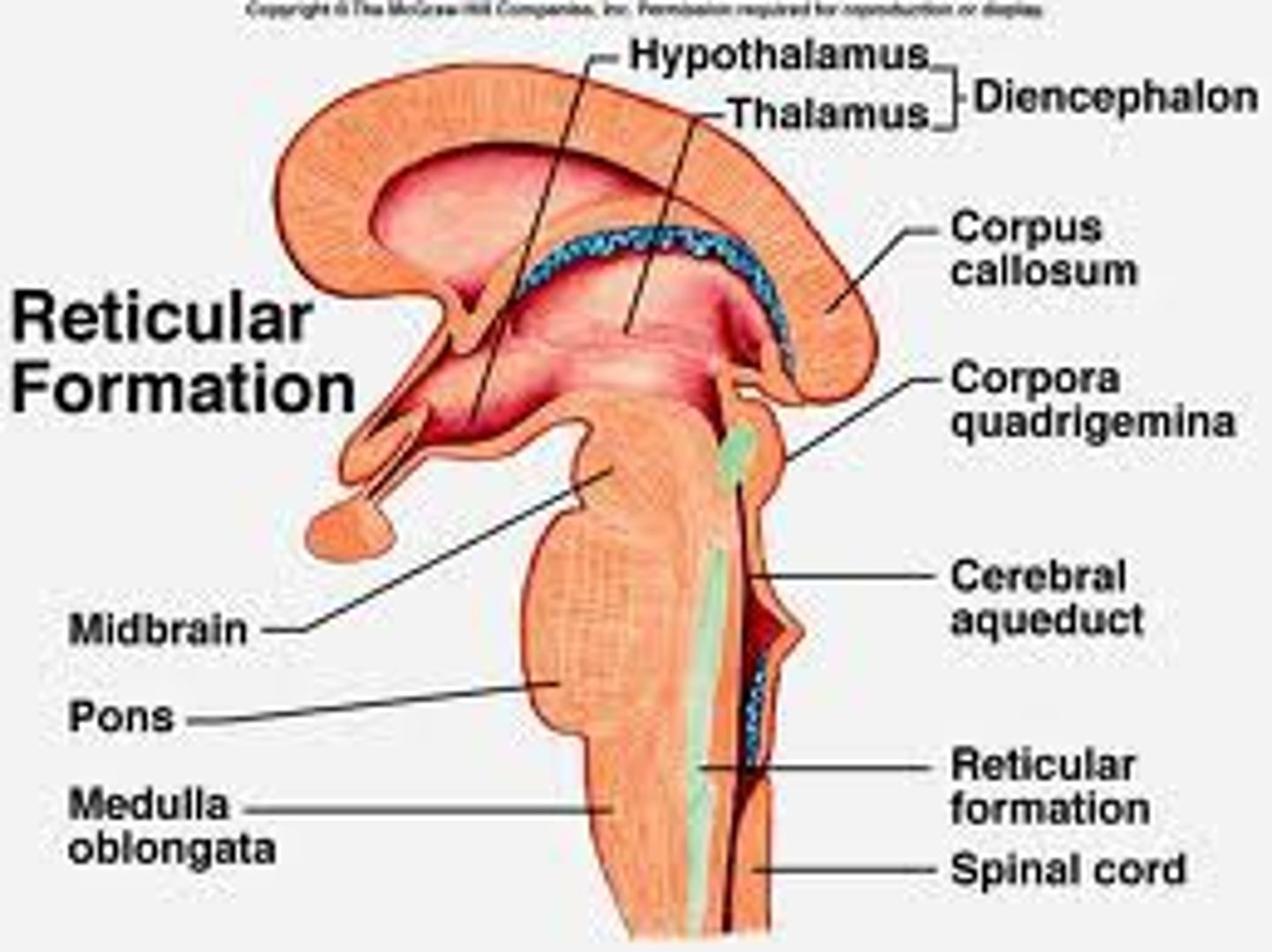AP Psychology Review 100 terms
1/99
There's no tags or description
Looks like no tags are added yet.
Name | Mastery | Learn | Test | Matching | Spaced |
|---|
No study sessions yet.
100 Terms
Empiricism
The view that knowledge originates in experience and that science should therefore rely on observation and experimentation.
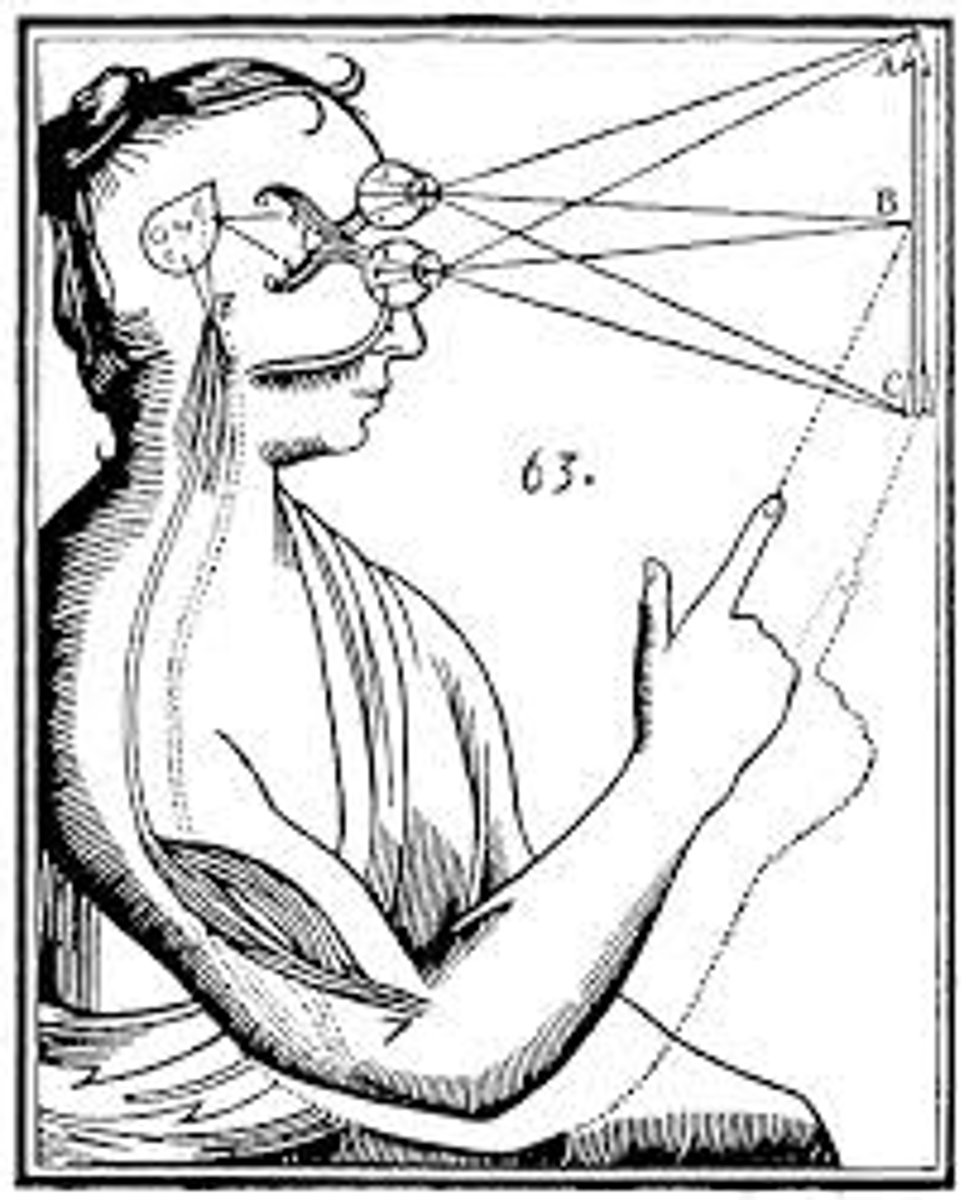
Structuralism
Developed by Edward Bradford Titchener, it focused on self-reflection and introspection. Highly unreliable.
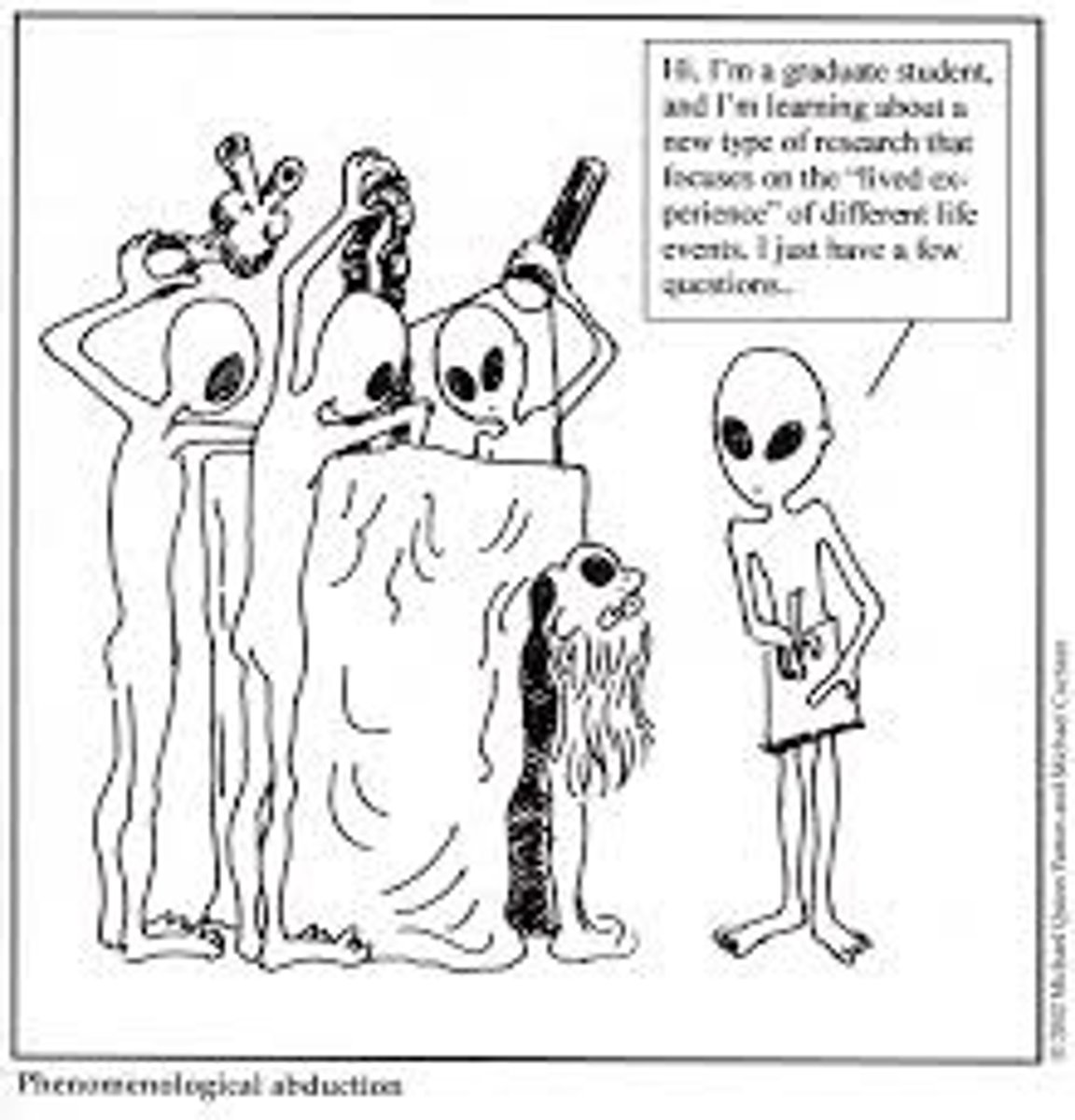
Functionalism
A school of psychology that focused on how our mental and behavioral processes enable us to adapt, survive, and flourish.
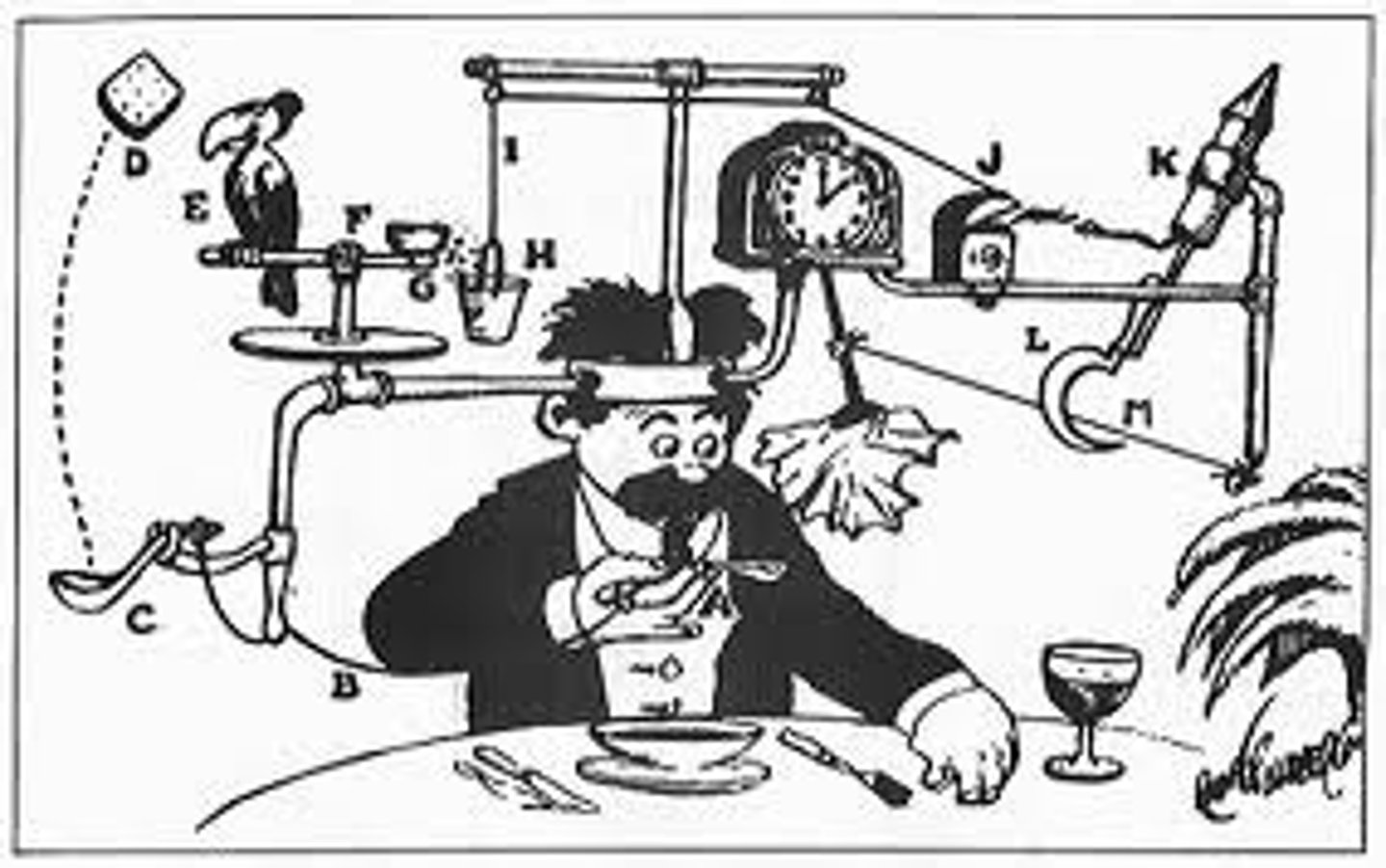
Experimental Psychology
The study of behavior and thinking using the experimental method.

Behaviorism
The view that psychology (1) should be an objective science that (2) studies behavior without reference to mental processes. Most research psychologists today agree with (1) but not with (2).
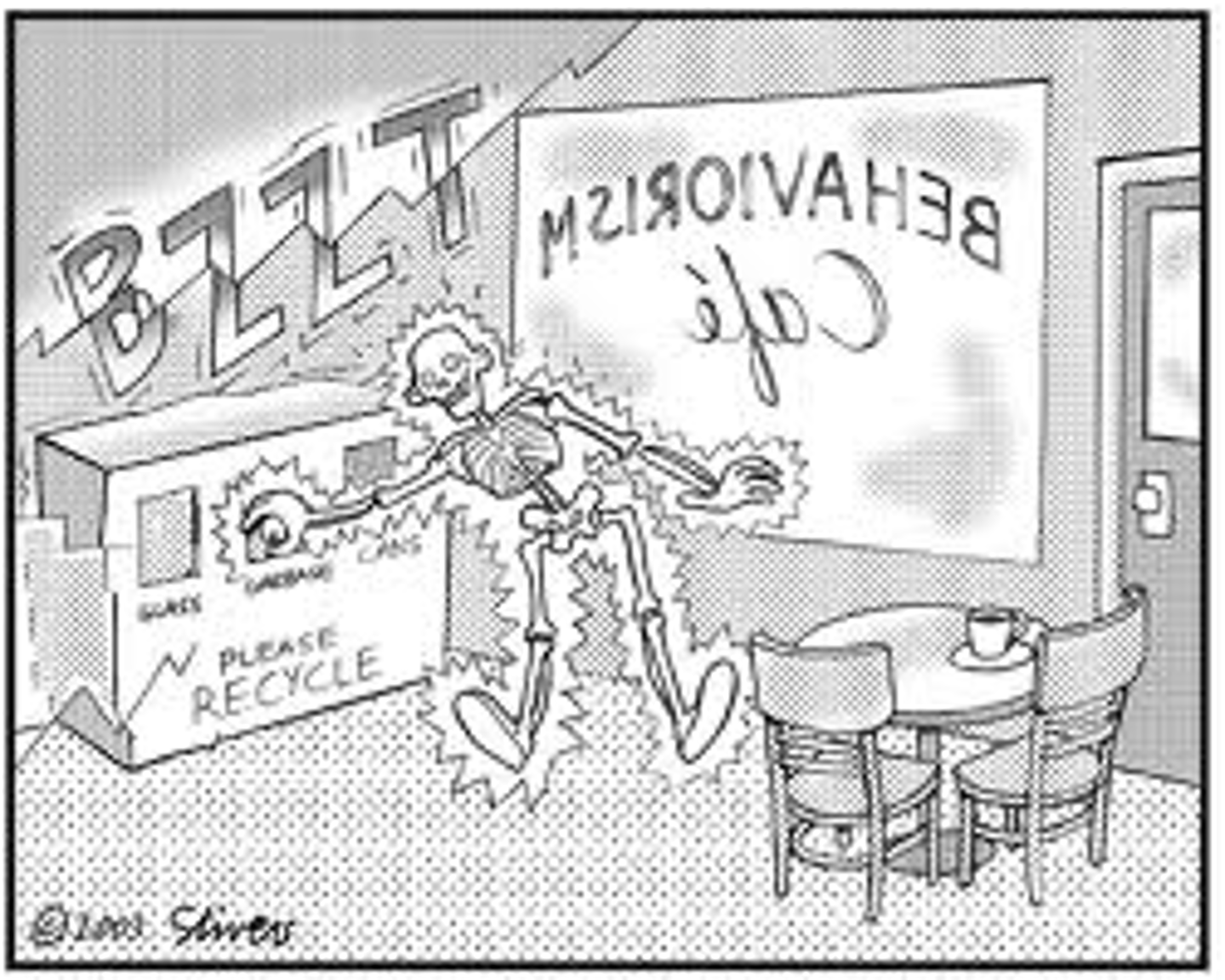
Humanistic Psychology
The historically significant perspective that emphasized the growth potential of healthy people and the individual's potential for personal growth.

Cognitive Neuroscience
The interdisciplinary study of the brain activity linked with thinking including perception, thinking, memory, and language.
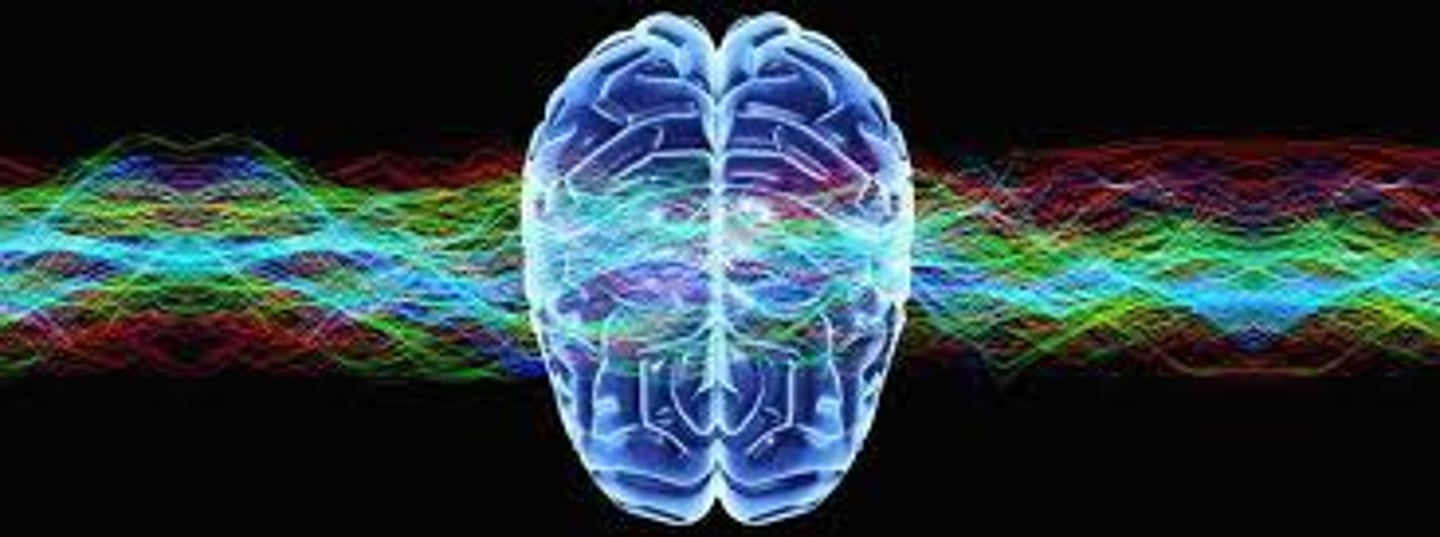
Psychology
The science of behavior and mental processes.
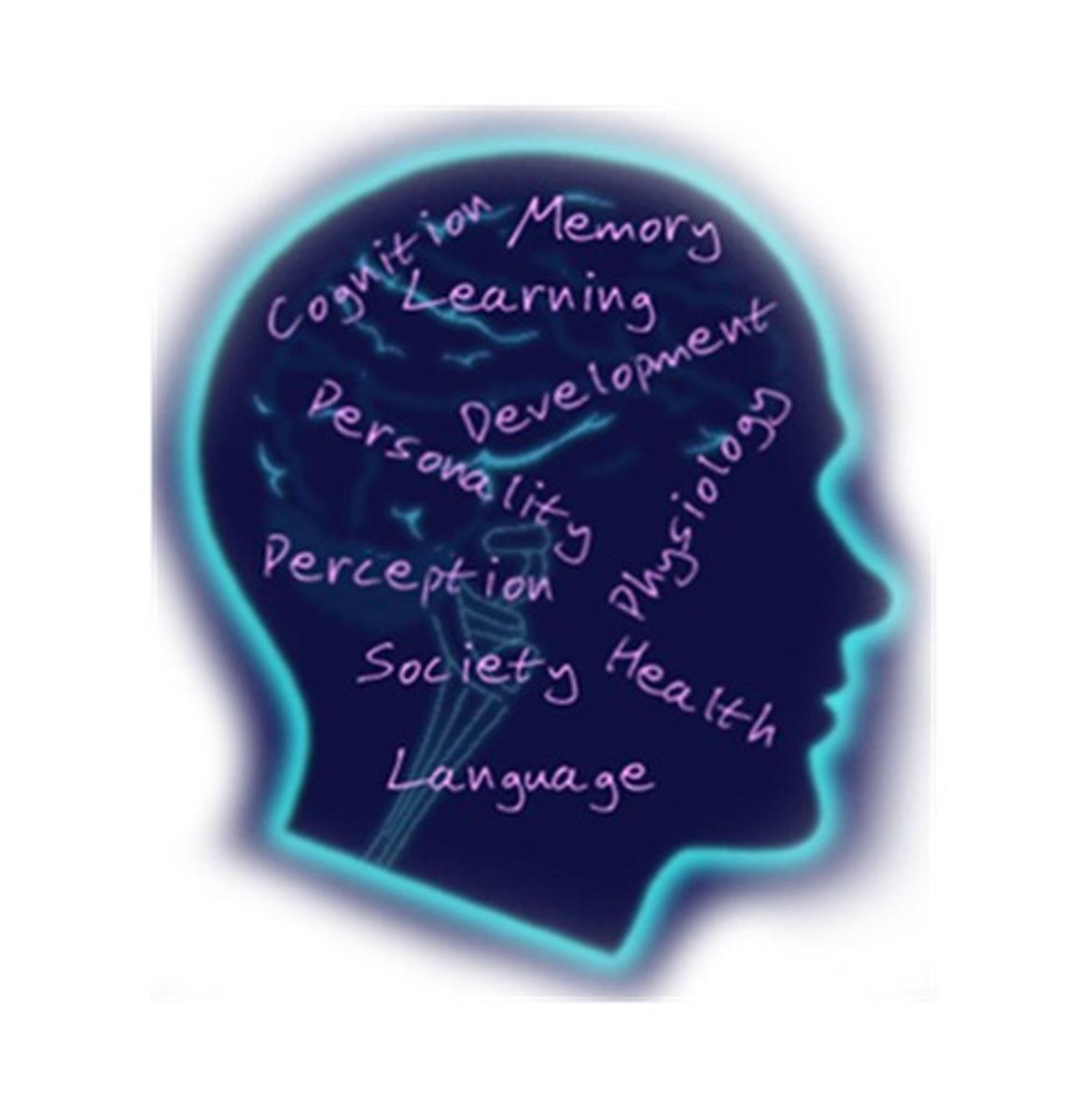
Nature-Nurture Issue
The longstanding controversy over the relative contributions that genes and experience make to the development of psychological traits and behaviors. Today's science sees traits and behaviors arising from the interaction of the two.
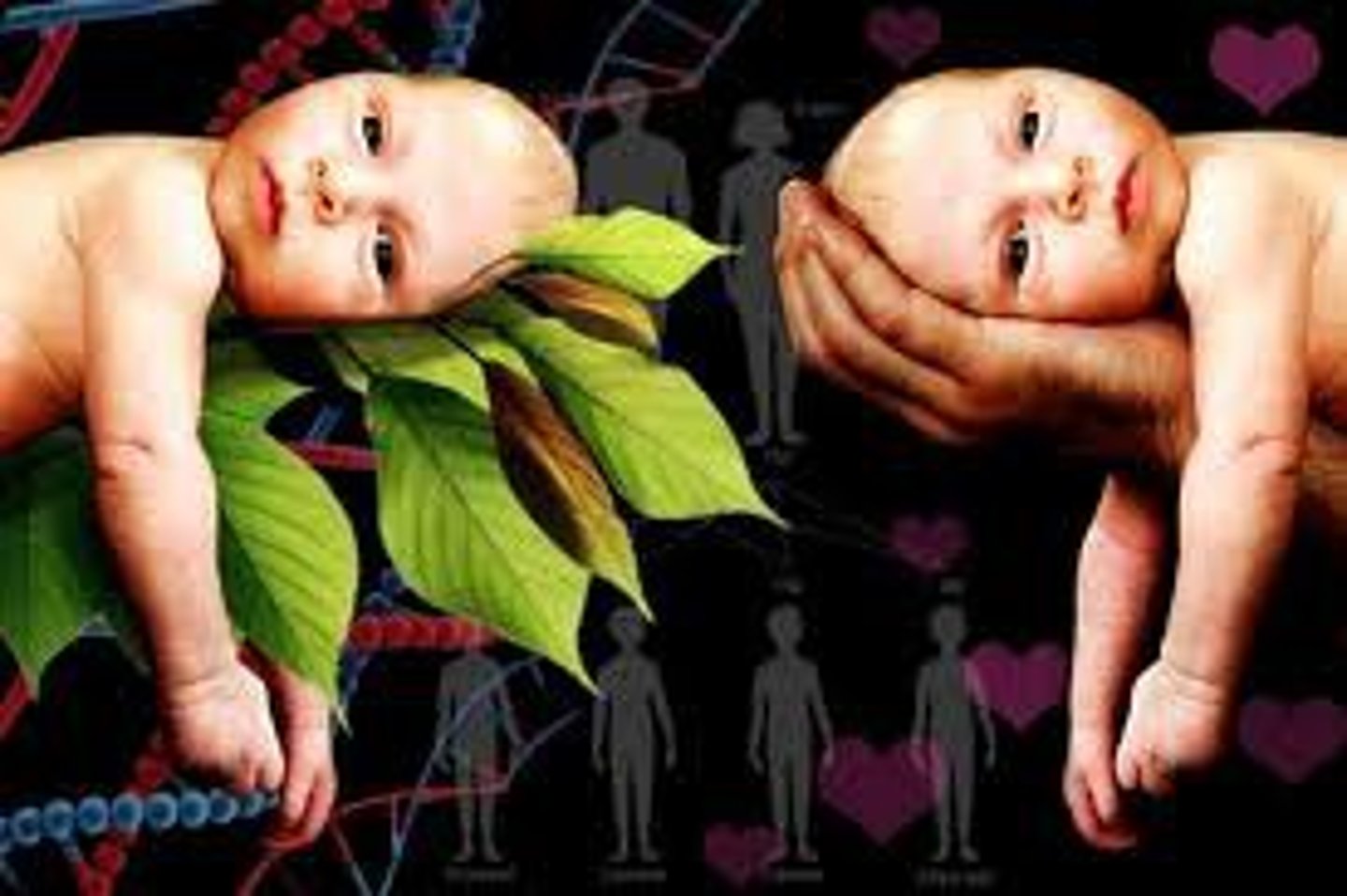
Natural Selection
The principle that, among the range of inherited trait variations, those contributing to reproduction and survival will most likely be passed on to succeeding generations.

Levels of Analysis
The differing complementary views, from biological to psychological to social-cultural, for analyzing any given phenomenon.

Biopsychosocial Approach
An integrated approach that incorporates biological, psychological, and social-cultural levels of analysis.

Biological Psychology
A branch of psychology concerned with the links between biology and behavior.

Evolutionary Psychology
The study of the roots of behavior and mental processes using the principles of natural selection.
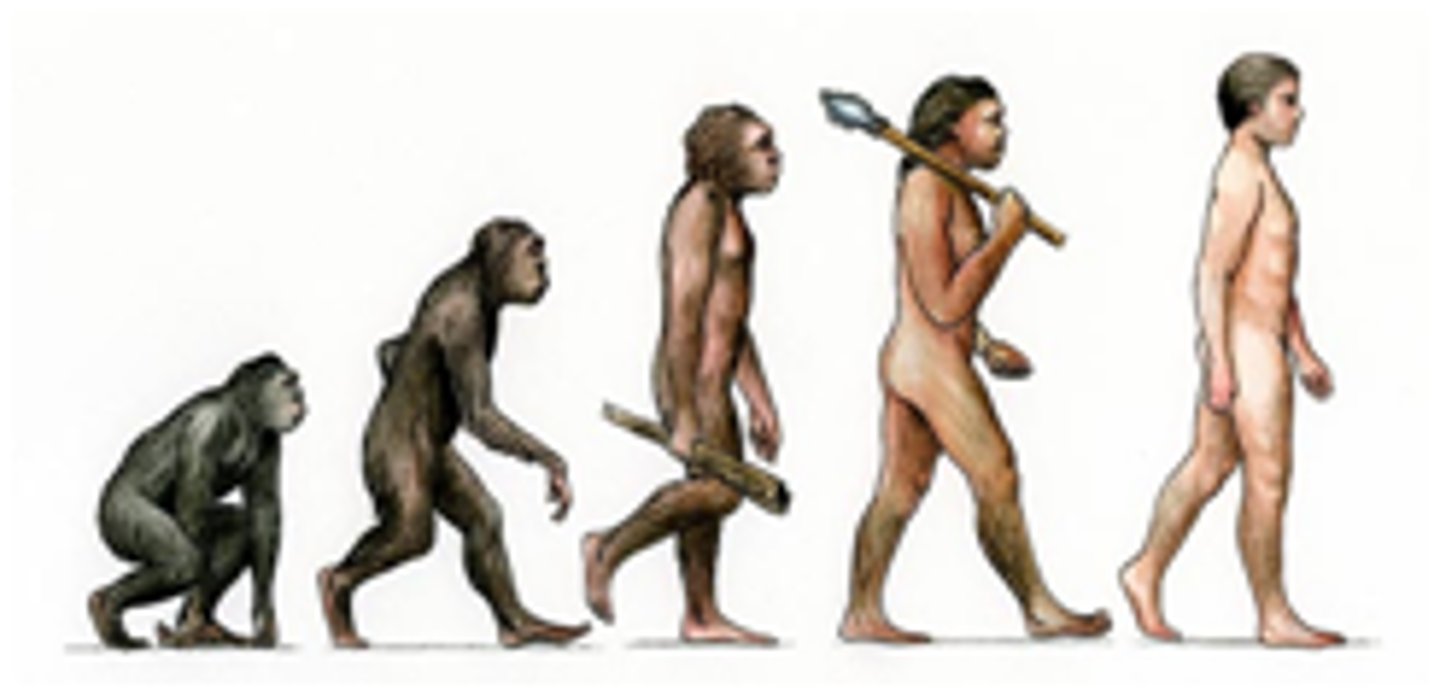
Psychodynamic Psychology
A branch of psychology that studies how unconscious drives and conflicts influence behavior, and uses that information to treat people with psychological disorders.
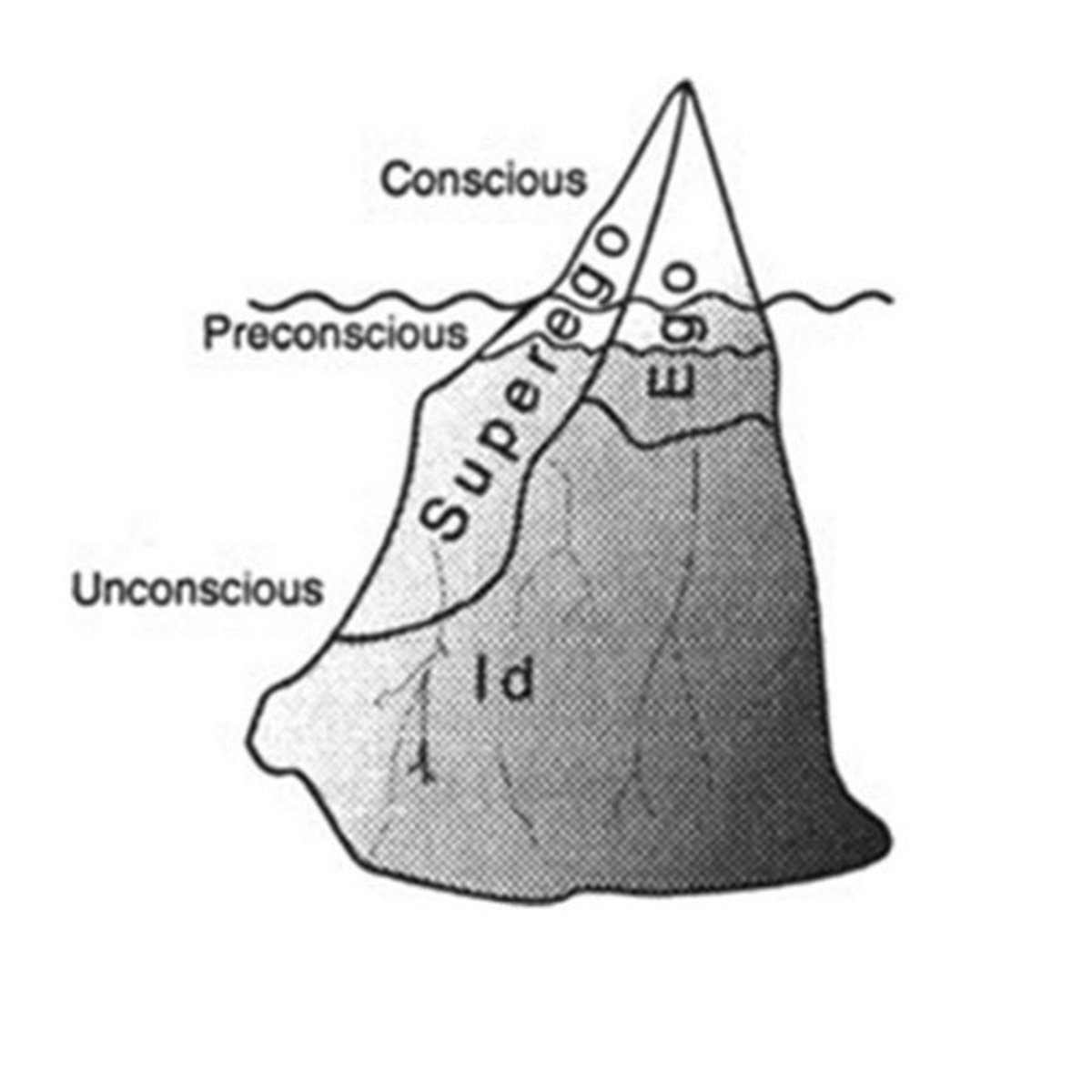
Behavioral Psychology
Method of changing abnormal behavior thru systematic program based on the learning principles of CLASSICAL conditioning, OPERANT Conditioning, or OBSERVATIONAL Learning.

Cognitive Psychology
The scientific study of all the mental activities associated with thinking, knowing, remembering, and communicating.

Social-Cultural Psychology
The study of how situations and cultures affect our behavior and thinking.

Psychometrics
The scientific study of the measurement of human abilities, attitudes, and traits.
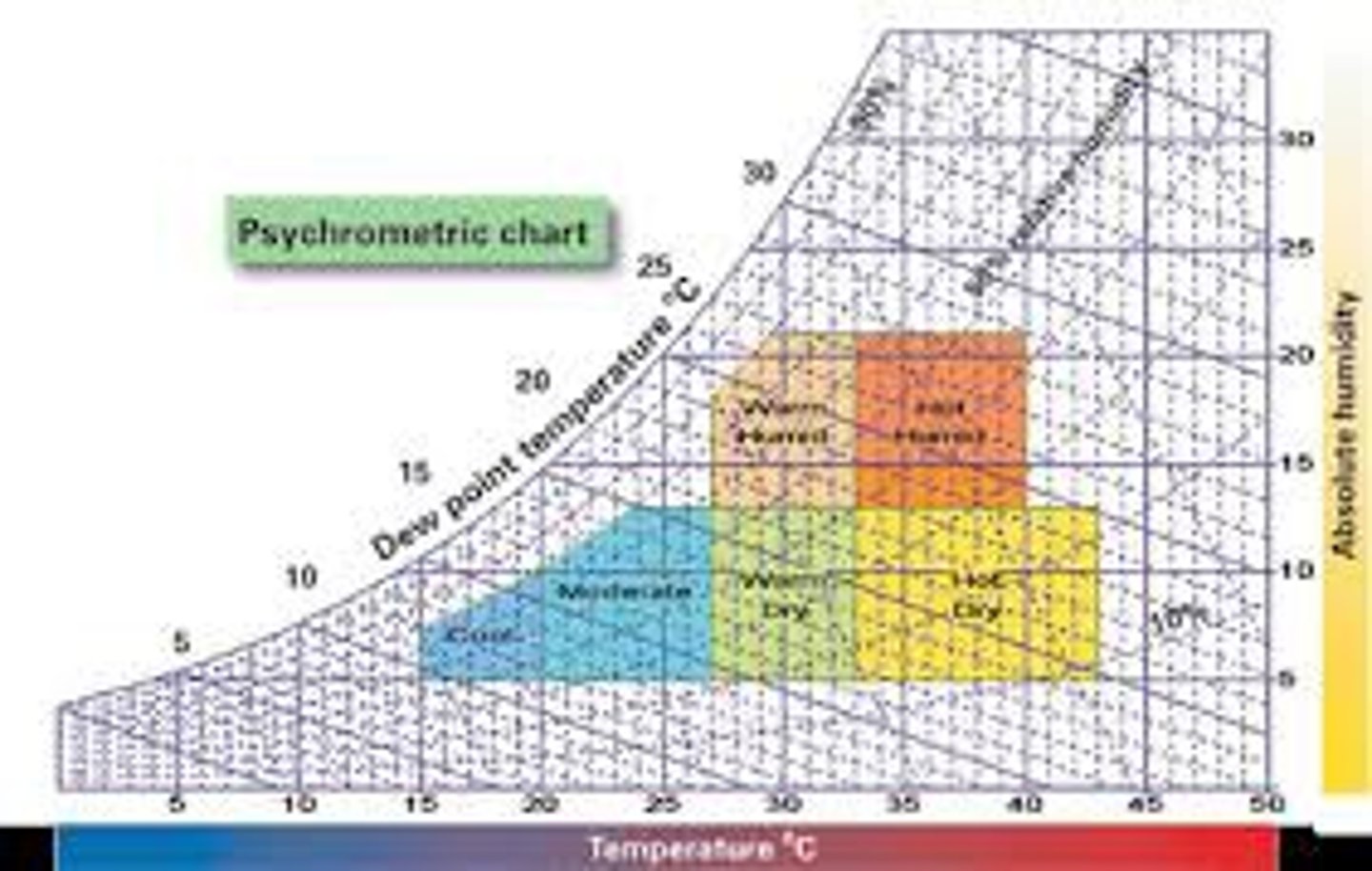
Basic Research
One of the two main types of research, pure research that aims to confirm an existing theory or to learn more about a concept or phenomenon
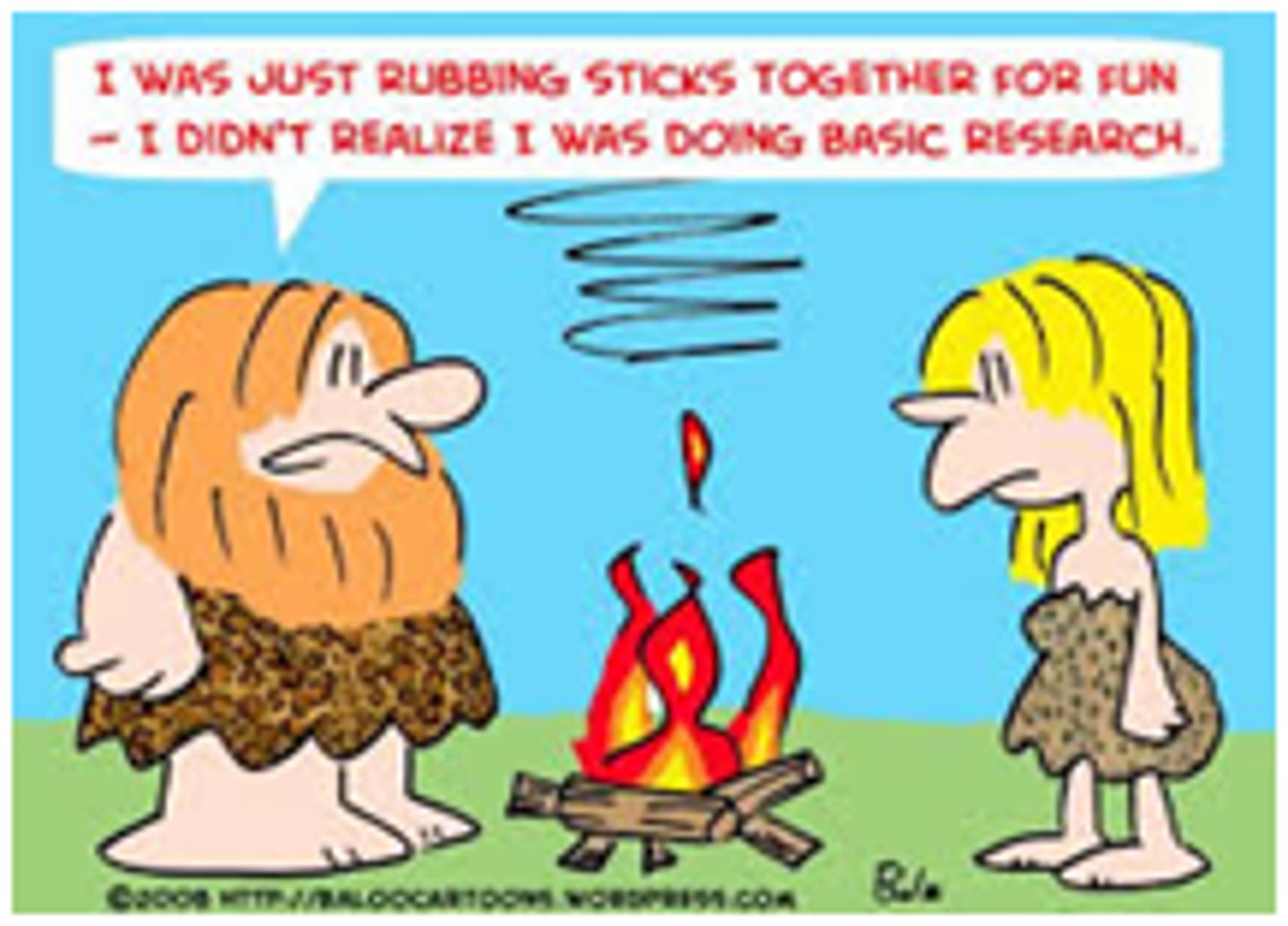
Developmental Psychology
A branch of psychology that studies physical, cognitive, and social change throughout the life span.
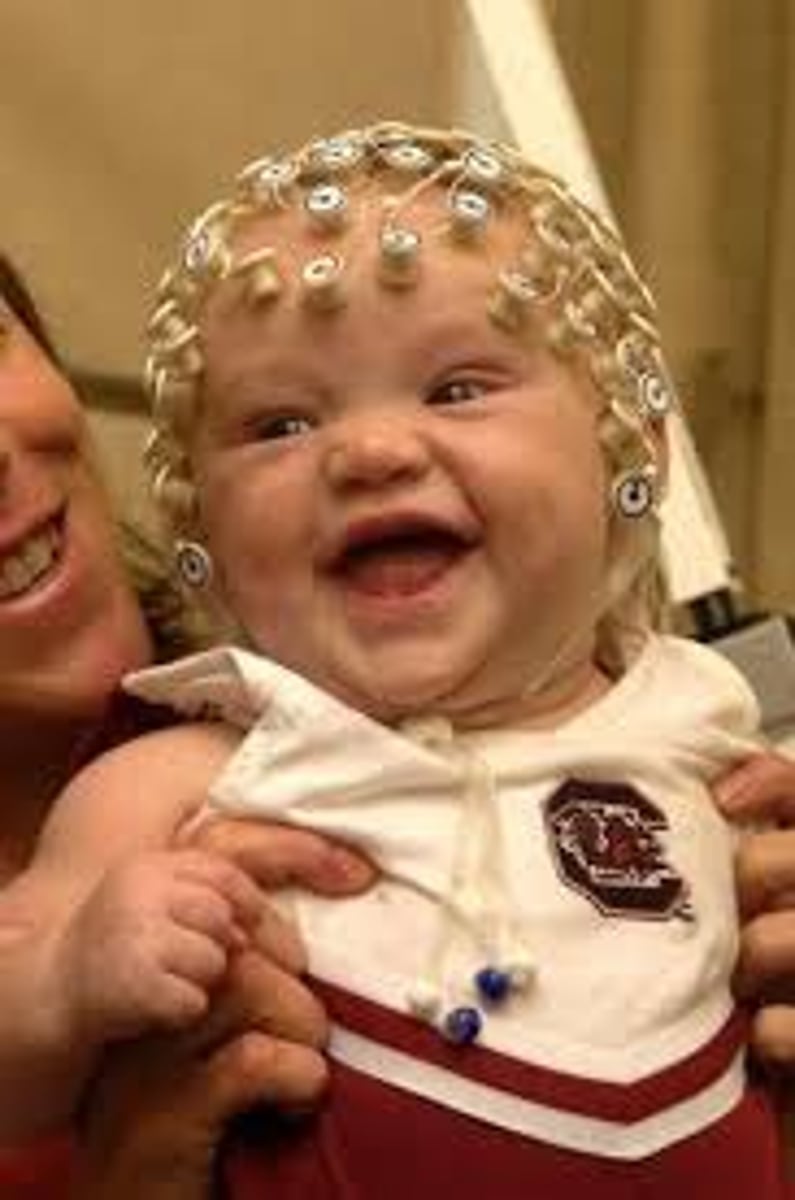
Educational Psychology
The study of how psychological processes affect and can enhance teaching and learning.
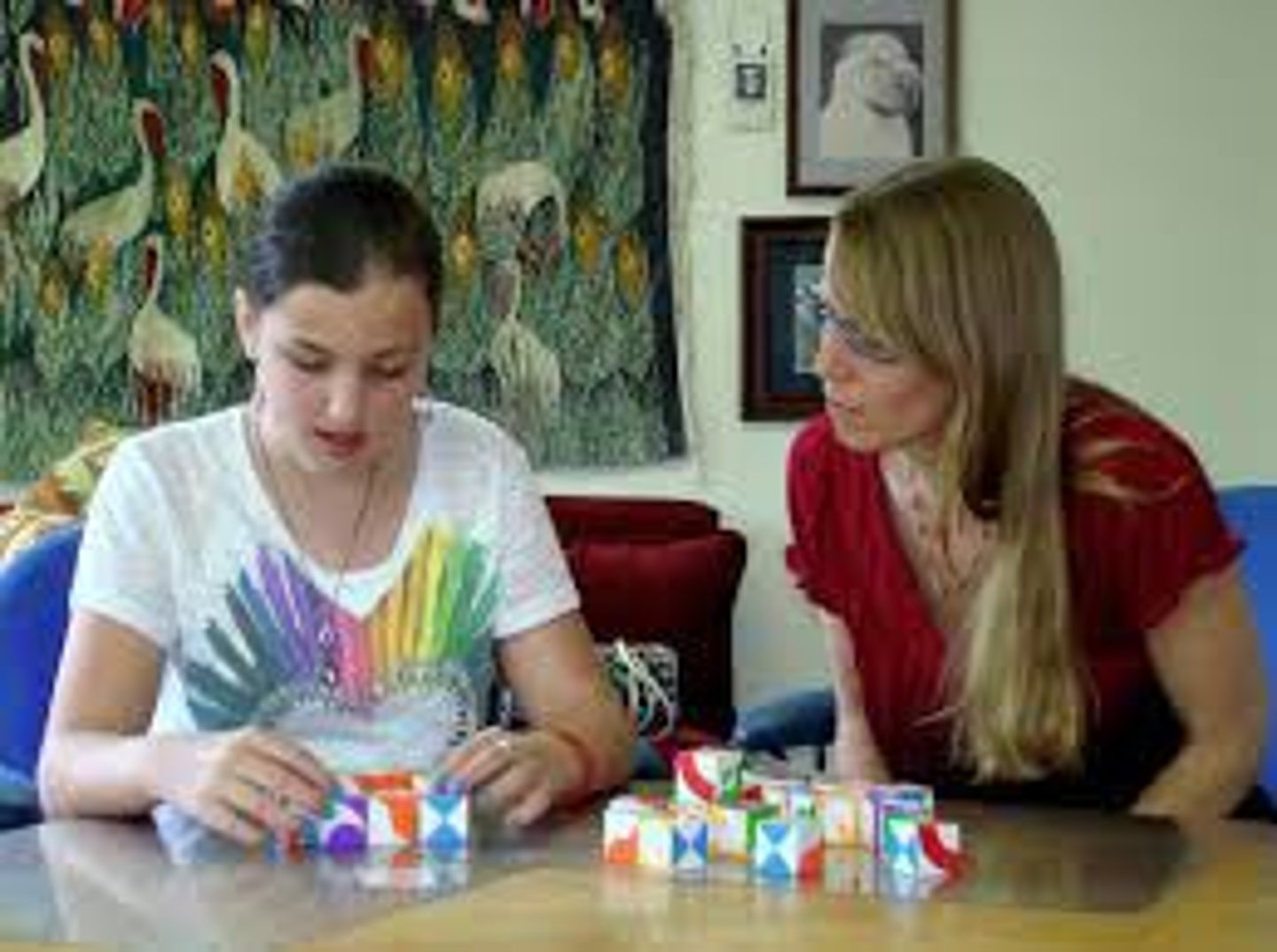
Personality Psychology
The study of an individual's characteristic pattern of thinking, feeling, and acting.

Social Psychology
The scientific study of how we think about, influence, and relate to one another.

Applied Research
One of the two main types of research, conducted specifically to solve practical problems and improve the quality of life.

Industrial-Organizational (I/O) Psychology
The application of psychological concepts and methods to optimizing human behavior in workplaces.

Human Factors Psychology
A branch of psychology that explores how people and machines interact and how machines and physical environments can be made safe and easy to use.

Counseling Psychology
A branch of psychology that assists people with problems in living (often related to school, work, or marriage) and in achieving greater well-being.
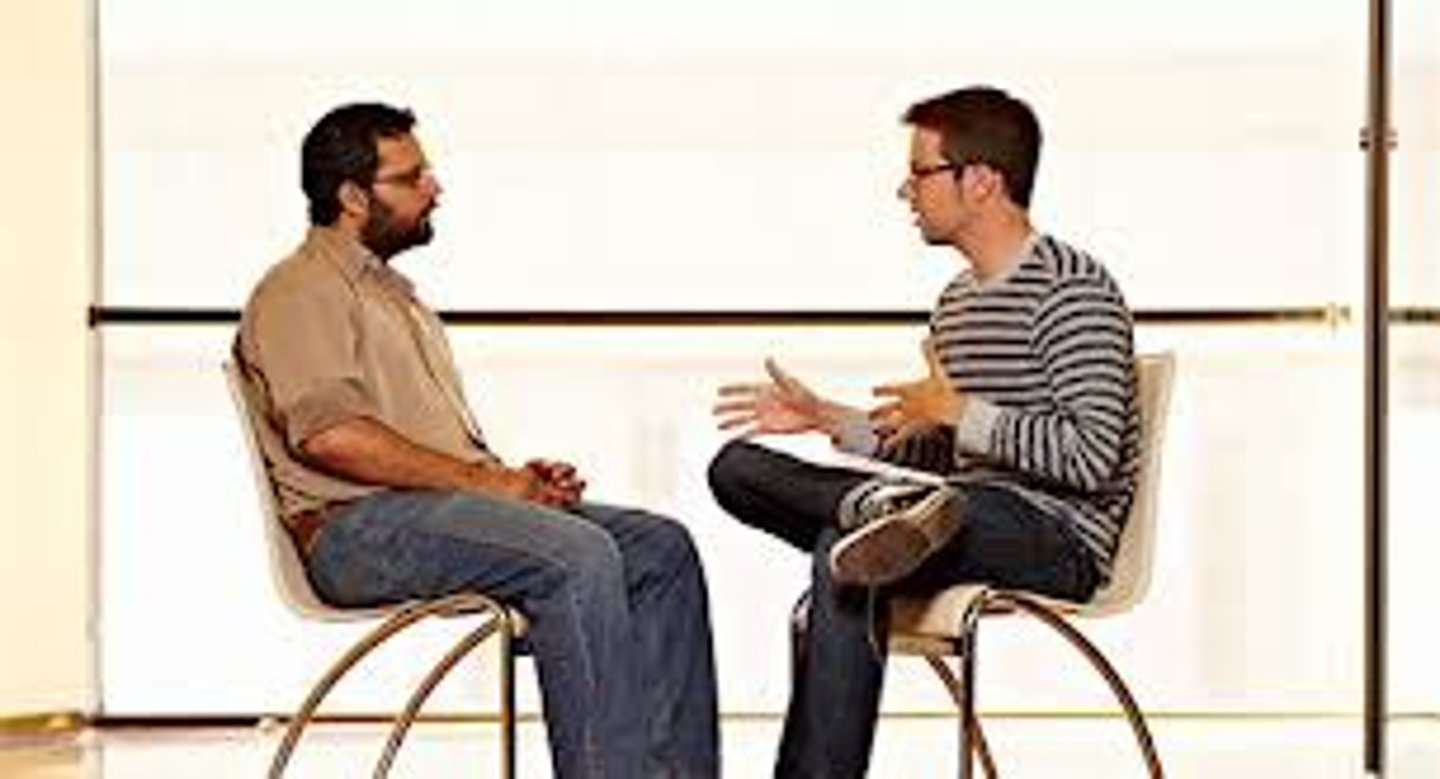
Clinical Psychology
A branch of psychology that studies, assesses, and treats people with psychological disorders.

Psychiatry
A branch of medicine dealing with psychological disorders; practiced by physicians who often provide medical (for example, drug) treatments as well as psychological therapy.

SQ3R
A study method incorporating five steps Survey, Question, Read, Rehearse, Review.

Hindsight Bias
The tendency to believe, after learning an outcome, that one would have foreseen it. (Also known as the I-knew-it-all-along phenomenon.)
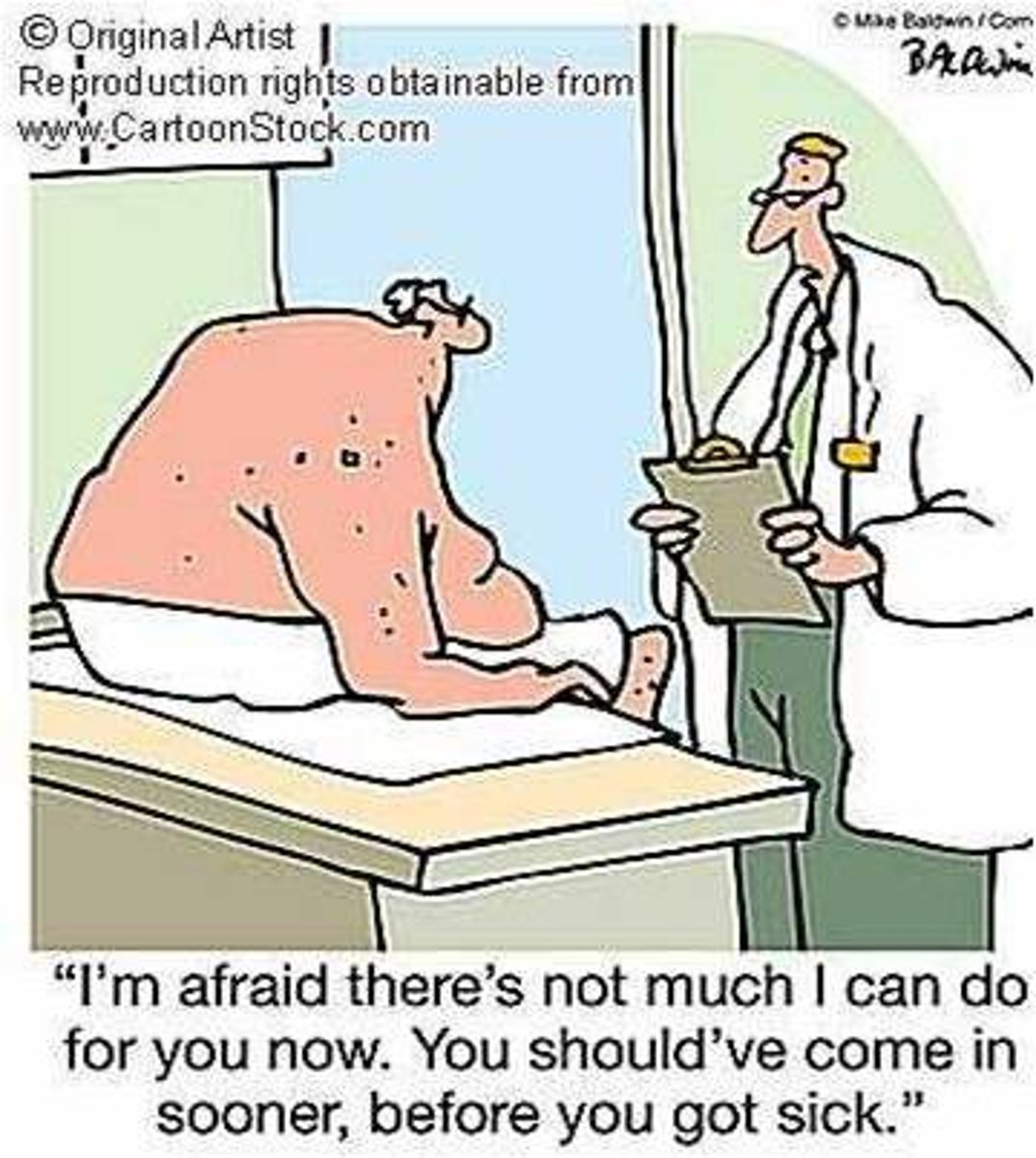
Critical Thinking
Thinking that does not blindly accept arguments and conclusions. Rather, it examines assumptions, discerns hidden values, evaluates evidence, and assesses conclusions.
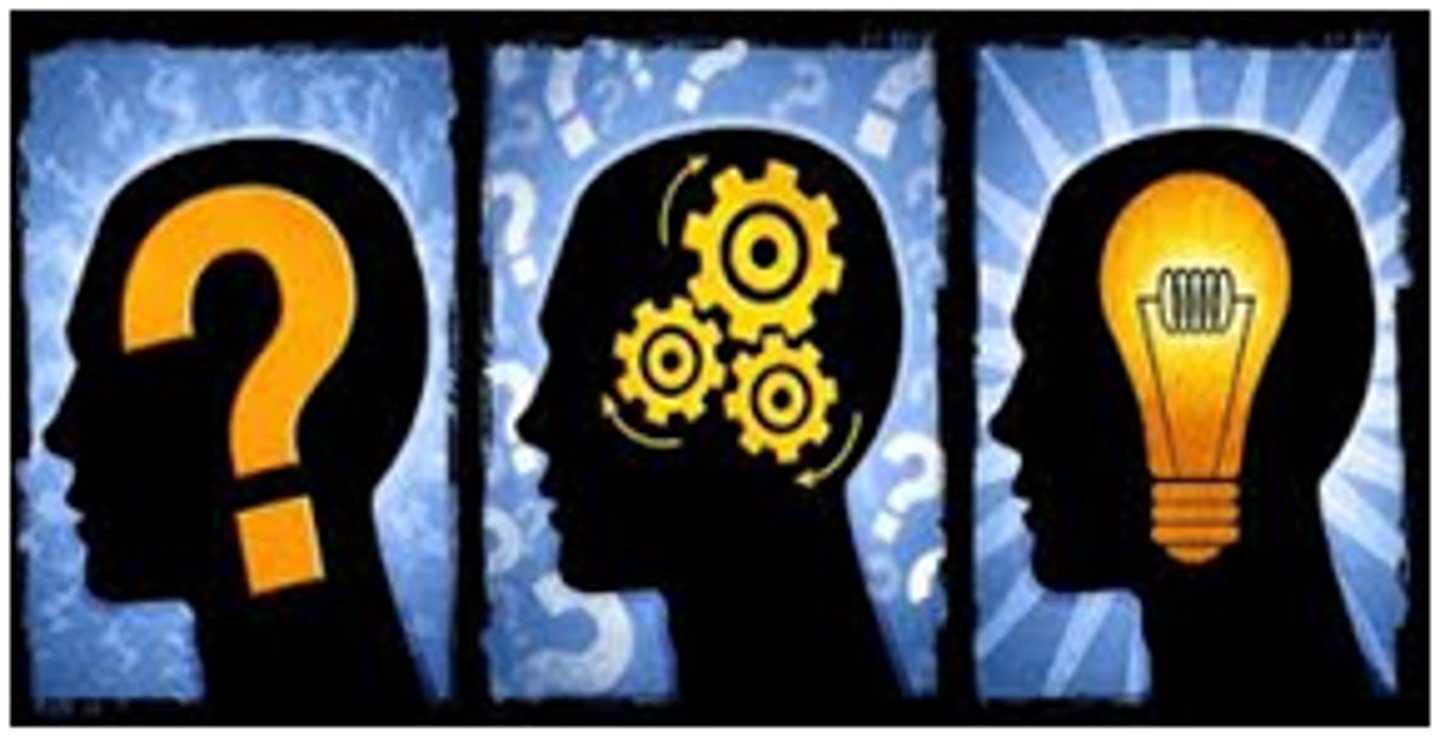
Theory
An explanation using an integrated set of principles that organizes observations and predicts behaviors or events.

Hypothesis
A testable prediction, often implied by a theory.

Operational Definition
A statement of the procedures (operations) used to define research variables.
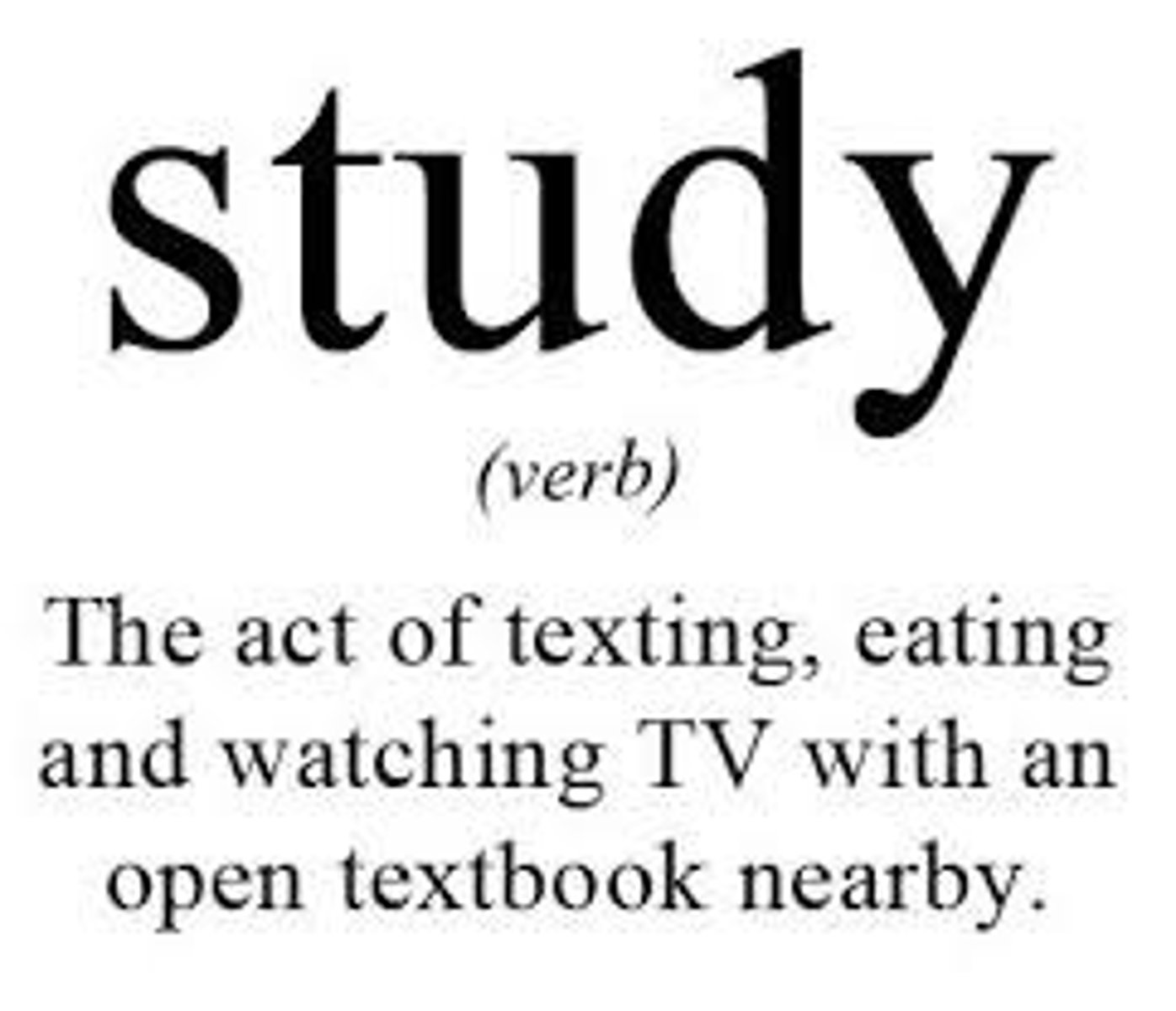
Replication
Repeating the essence of a research study, usually with different participants in different situations, to see whether the basic finding extends to other participants and circumstances.

Case Study
An observation technique in which one person is studied in depth in the hope of revealing universal principles.
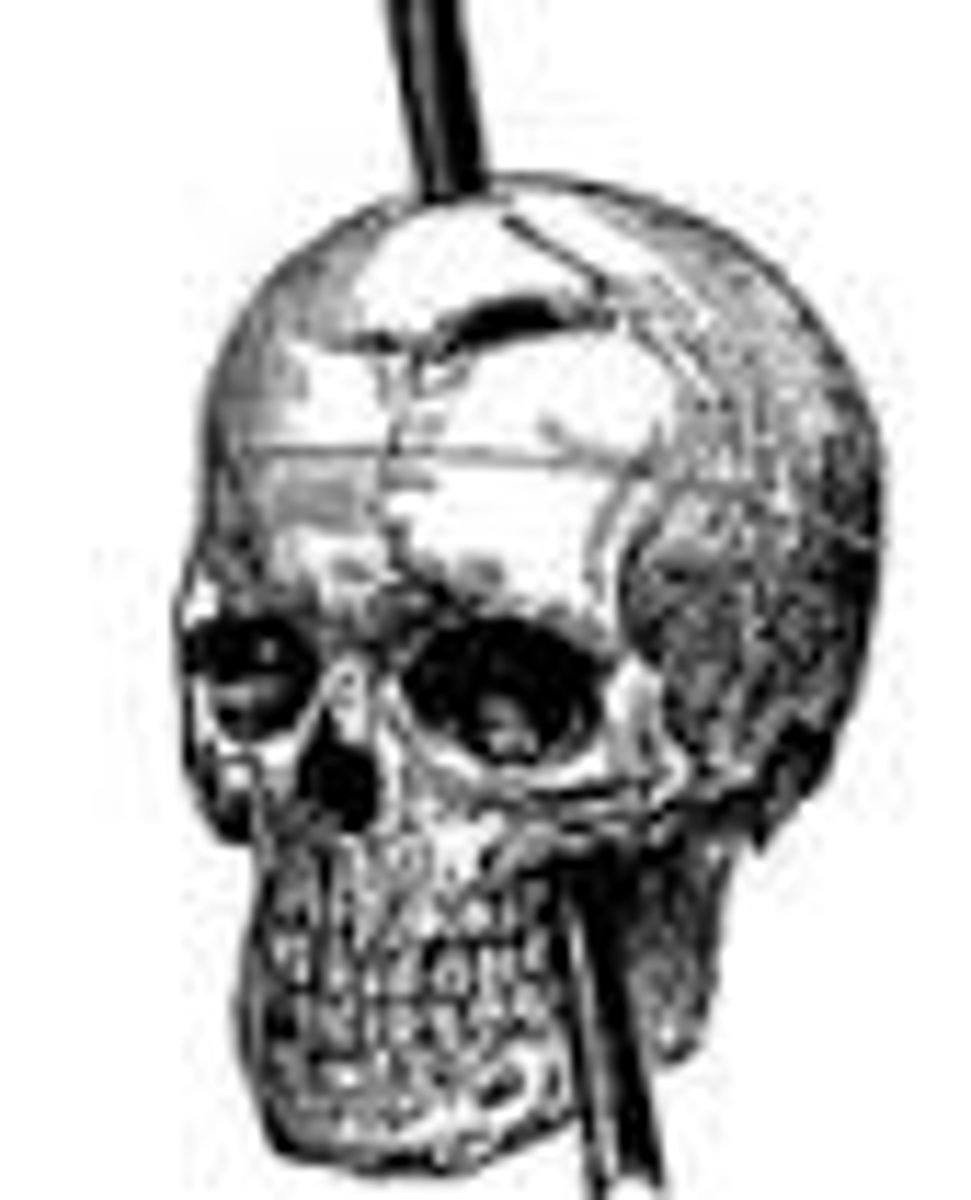
Survey
A technique for ascertaining the self-reported attitudes or behaviors of a particular group, usually by questioning a representative, random sample of the group.

Population
All the cases in a group being studied, from which samples may be drawn.
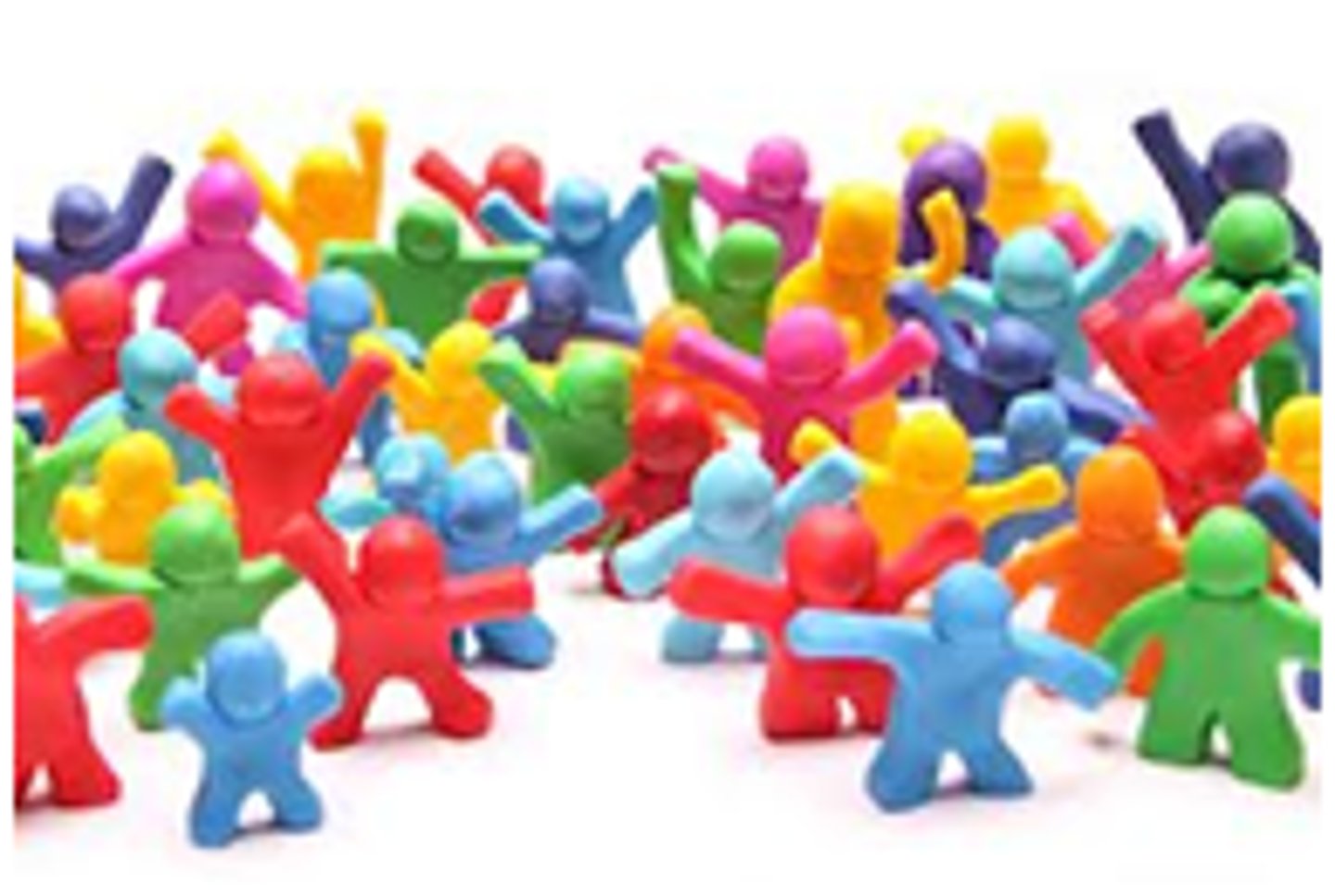
Random Sample
A sample that fairly represents a population because each member has an equal chance of inclusion.
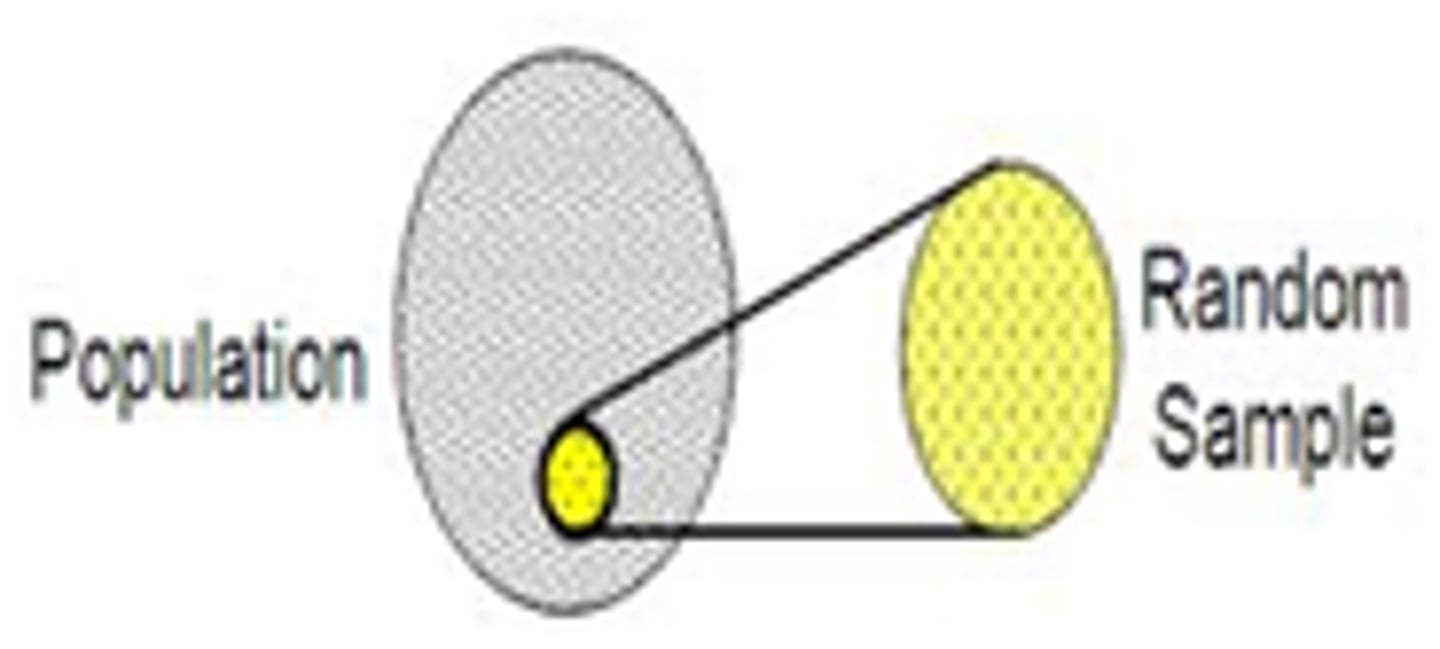
Naturalistic Observation
Observing and recording behavior in naturally occurring situations without trying to manipulate and control the situation.

Correlation
A measure of the extent to which two factors vary together, and thus of how well either factor predicts the other.

Correlation Coefficient
A statistical index of the relationship between two things (from -1 to +1).
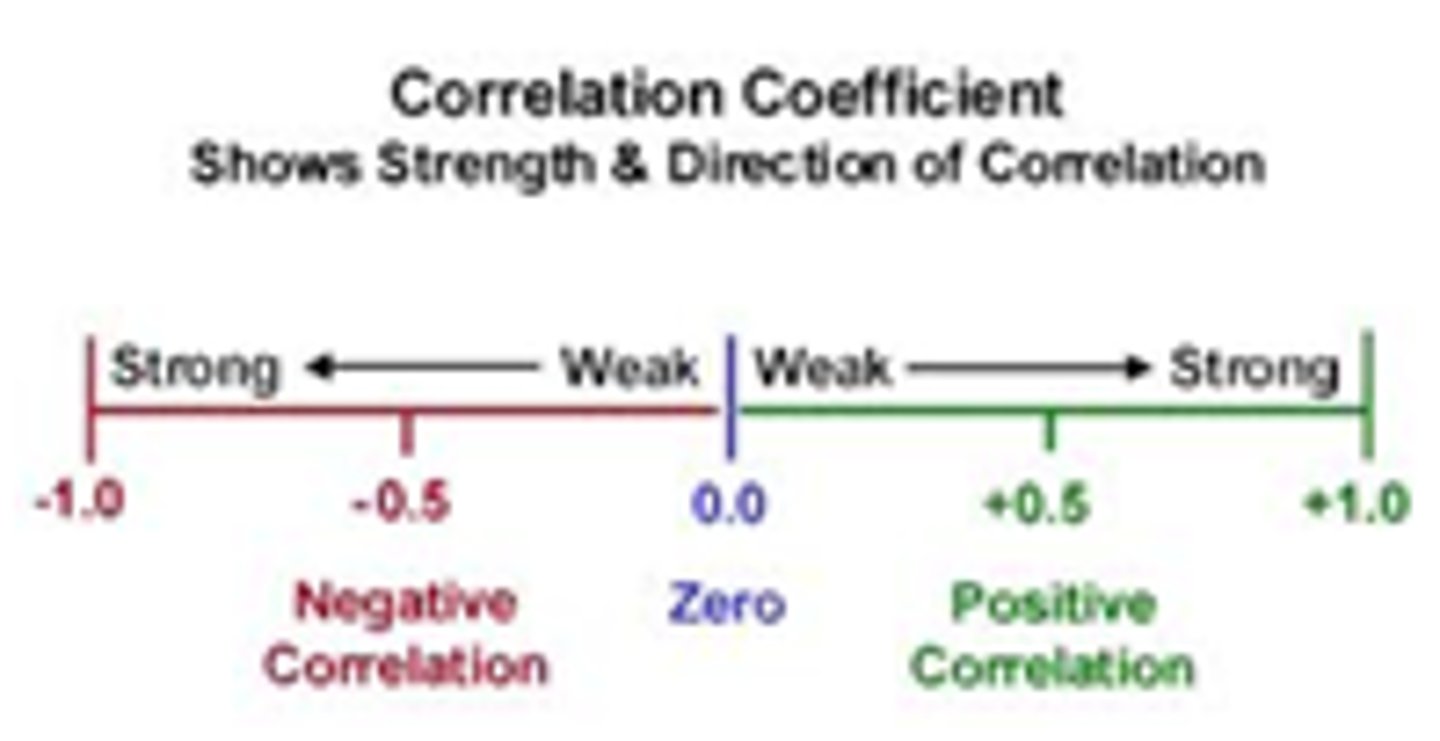
Scatterplot
A graphed cluster of dots, each of which represents the values of two variables. The slope of the points suggests the direction of the relationship between the two variables.
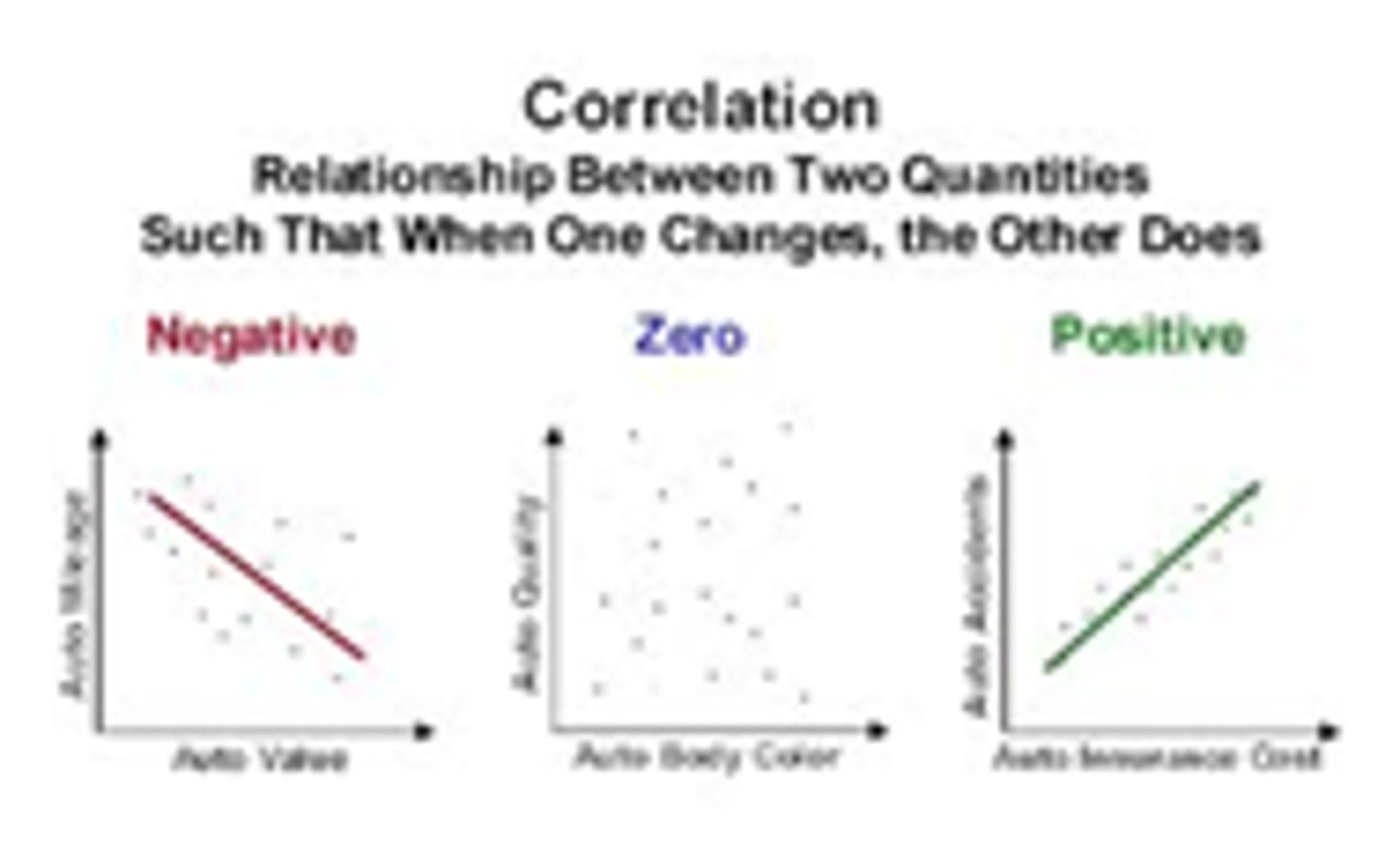
Illusory Correlation
The perception of a relationship where none exists.

Experiment
A research method in which an investigator manipulates one or more factors (independent variables) to observe the effect on some behavior or mental process (the dependent variable). By random assignment of participants, the investigator aims to control other relevant factors.
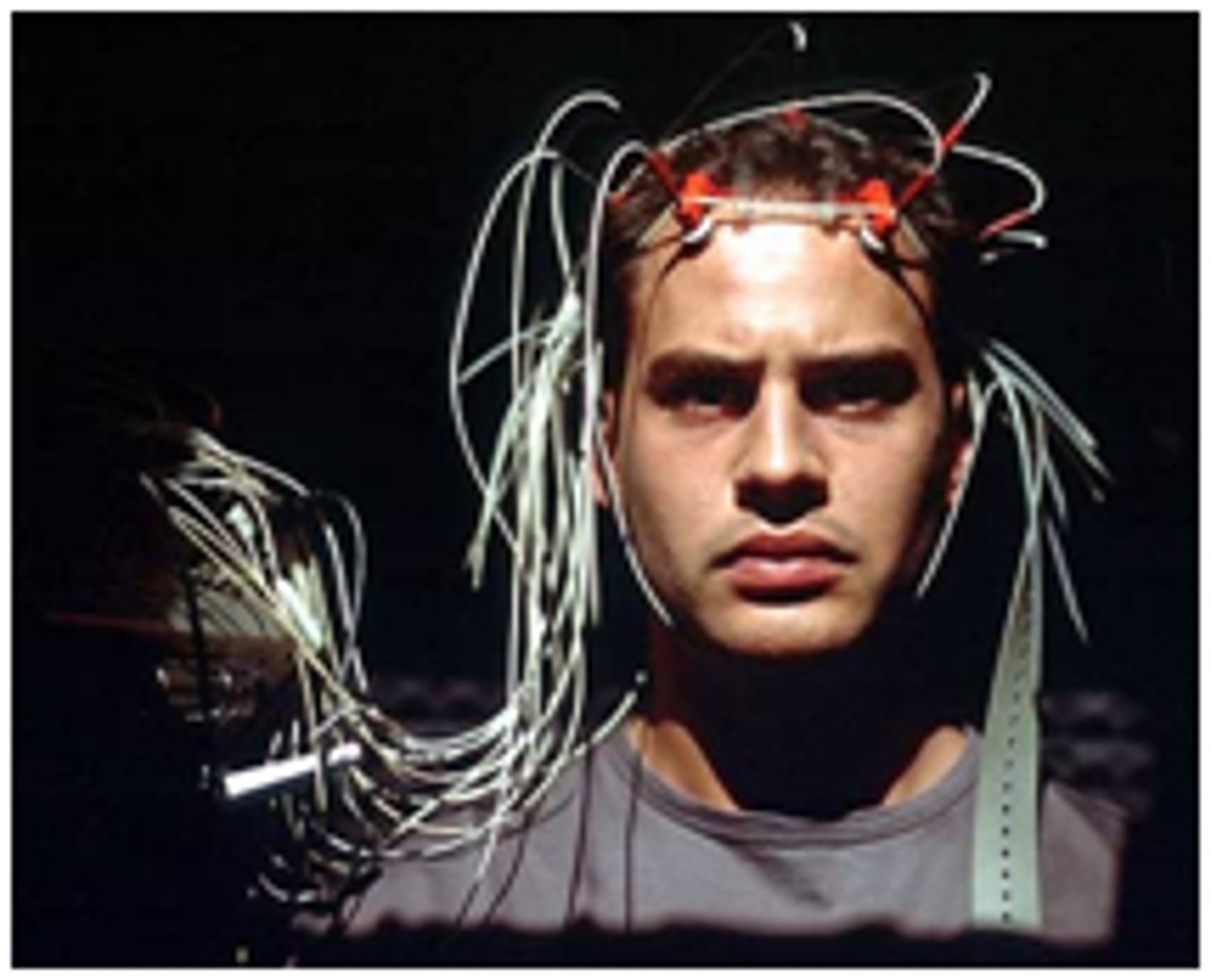
Random Assignment
Assigning participants to experimental and control groups by chance, thus minimizing preexisting differences between those assigned to the different groups.
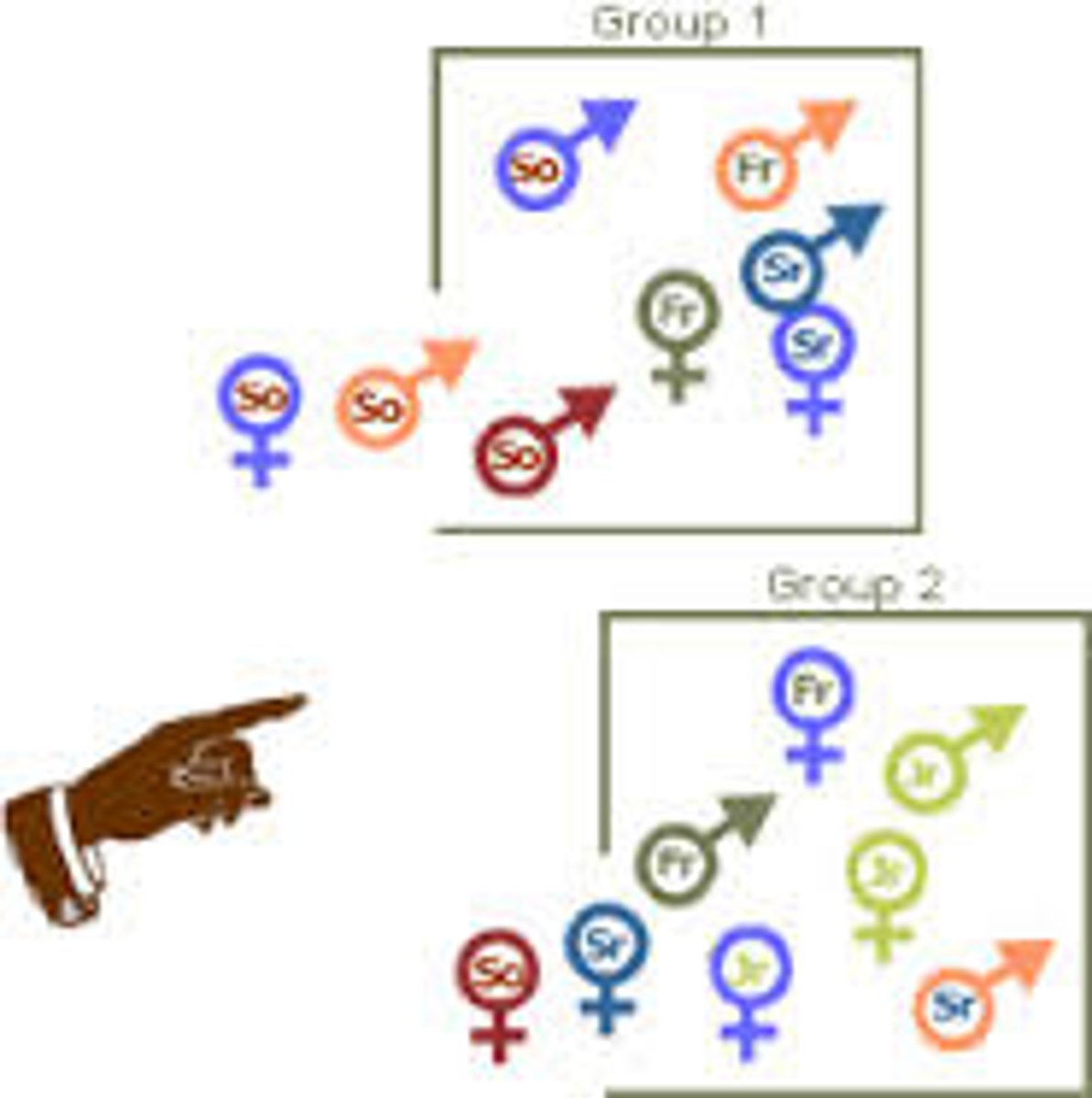
Double-Blind Procedure
An experimental procedure in which both the research participants and the research staff are ignorant (blind) about whether the research participants have received the treatment or a placebo. Commonly used in drug-evaluation studies.

Placebo Effect
Experimental results caused by expectations alone; any effect on behavior caused by the administration of an inert substance or condition, which the recipient assumes is an active agent.
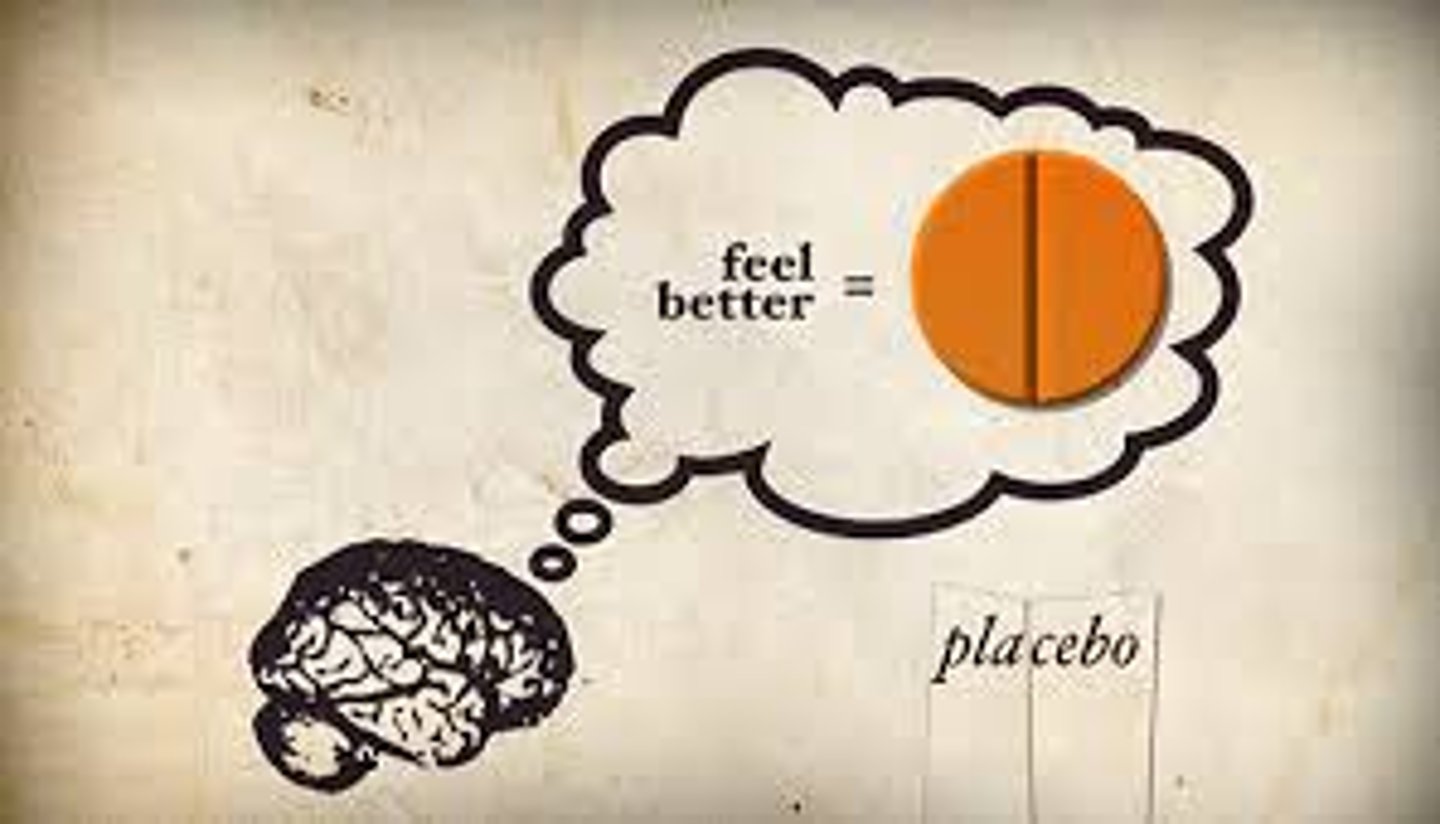
Experimental Group
In an experiment, the group that is exposed to the treatment, that is, to one version of the independent variable.
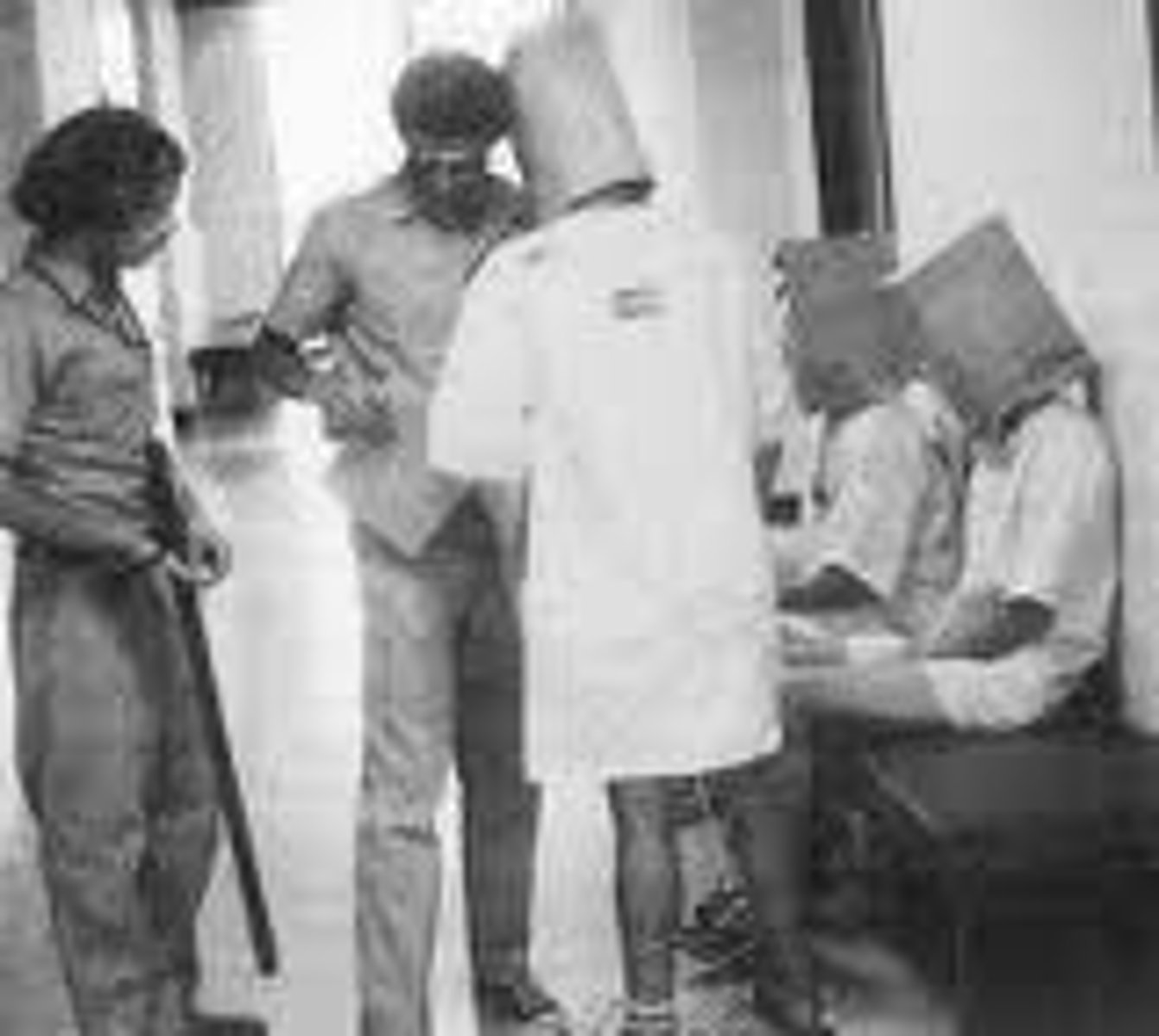
Control Group
In an experiment, the group that is not exposed to the treatment; contrasts with the experimental group and serves as a comparison for evaluating the effect of the treatment.
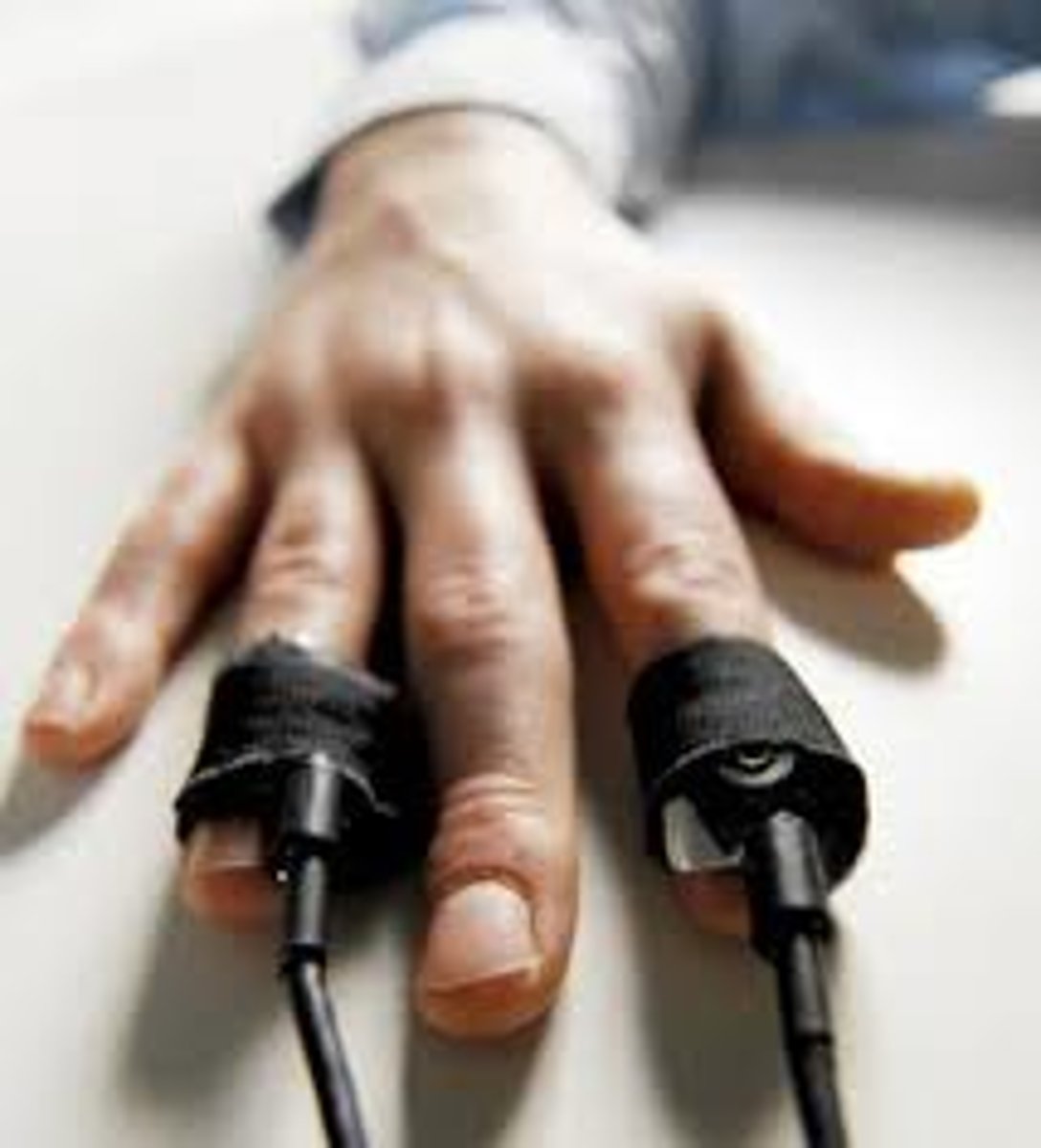
Independent Variable
The experimental factor that is manipulated; the variable whose effect is being studied.
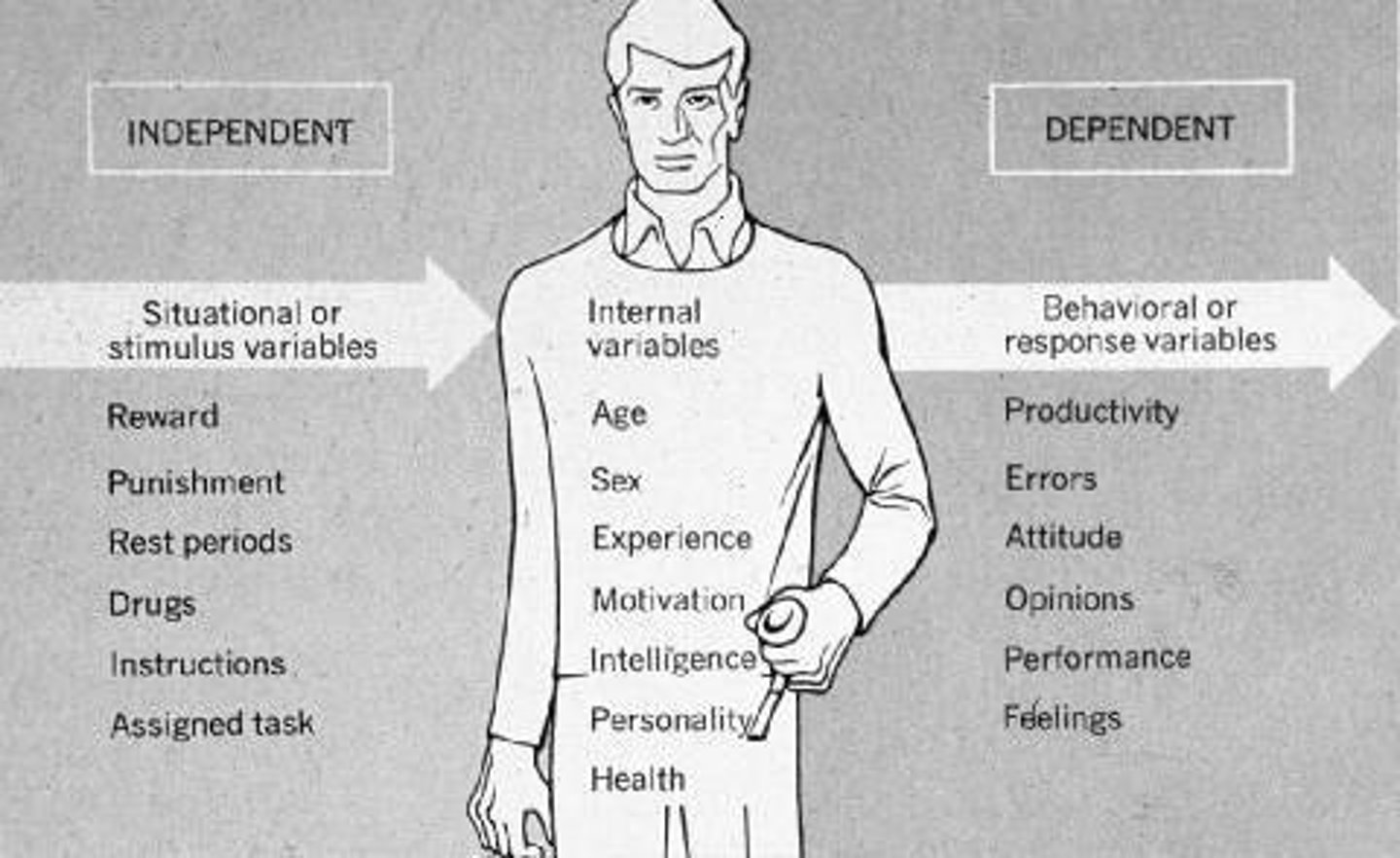
Confounding Variable
A factor other than the independent variable that might produce an effect in an experiment.

Dependent Variable
The outcome factor; the variable that may change in response to manipulations of the independent variable.
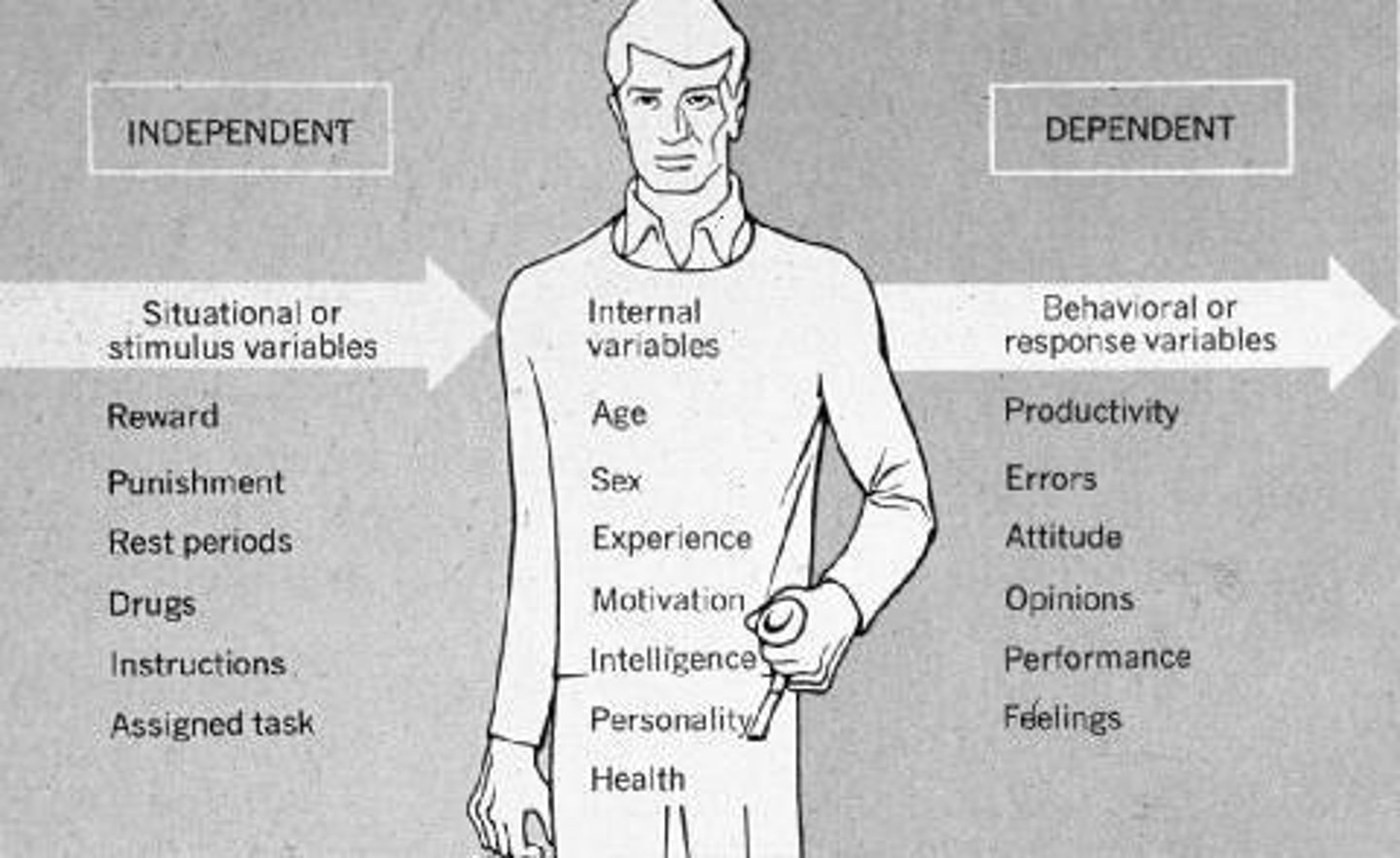
Mode
The most frequently occurring score(s) in a distribution.
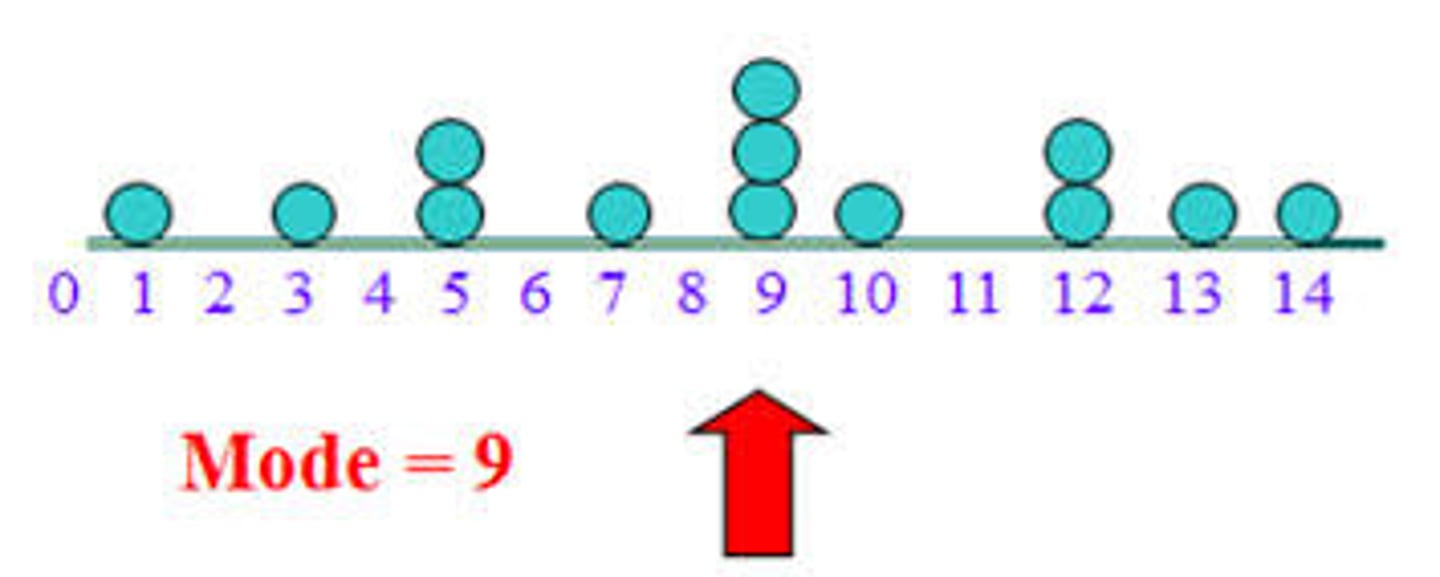
Mean
The arithmetic average of a distribution, obtained by adding the scores and then dividing by the number of scores.
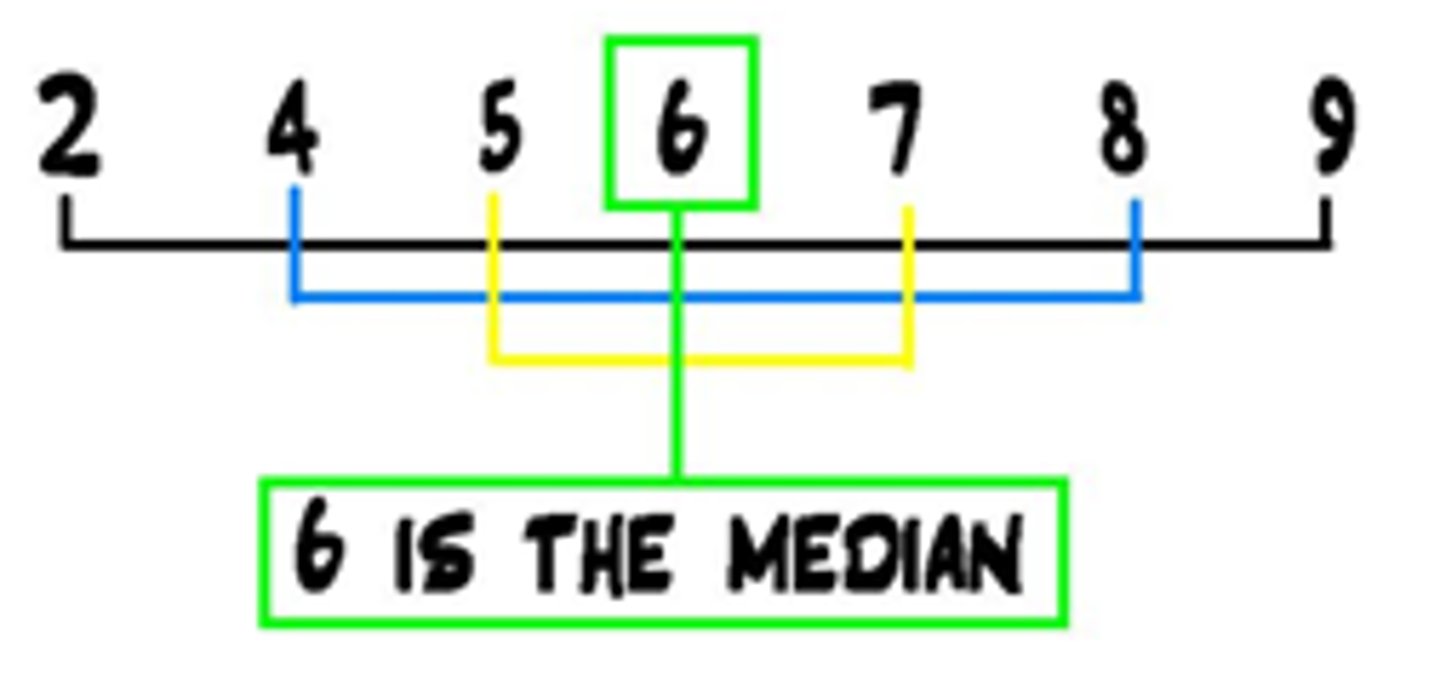
Median
The middle score in a distribution; half the scores are above it and half are below it.
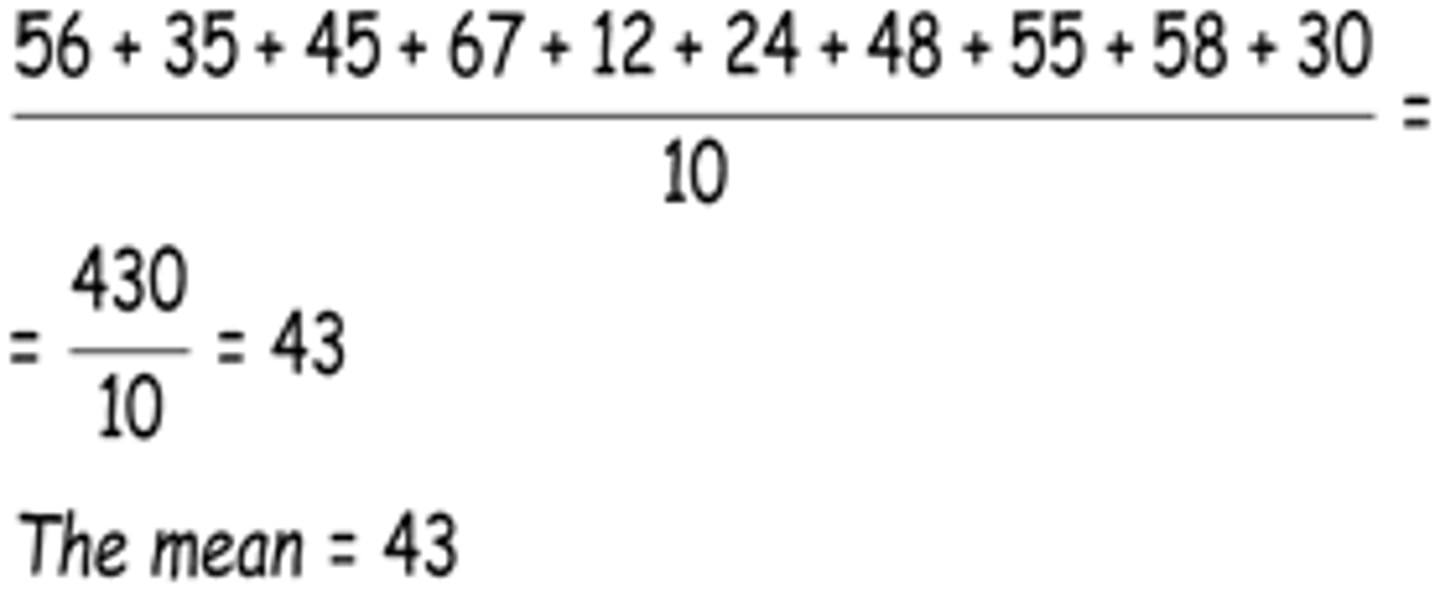
Range
The difference between the highest and lowest scores in a distribution.
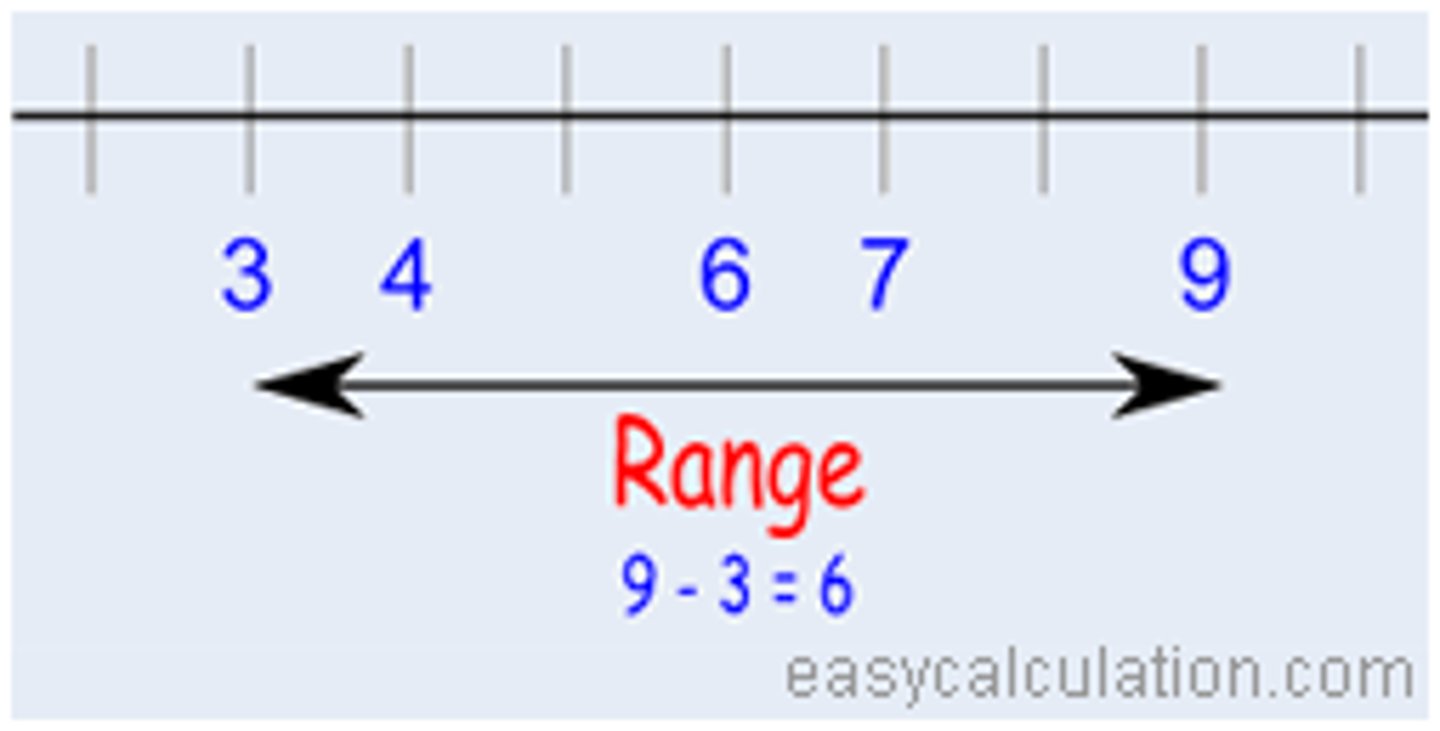
Standard Deviation
A computed measure of how much scores vary around the mean score.
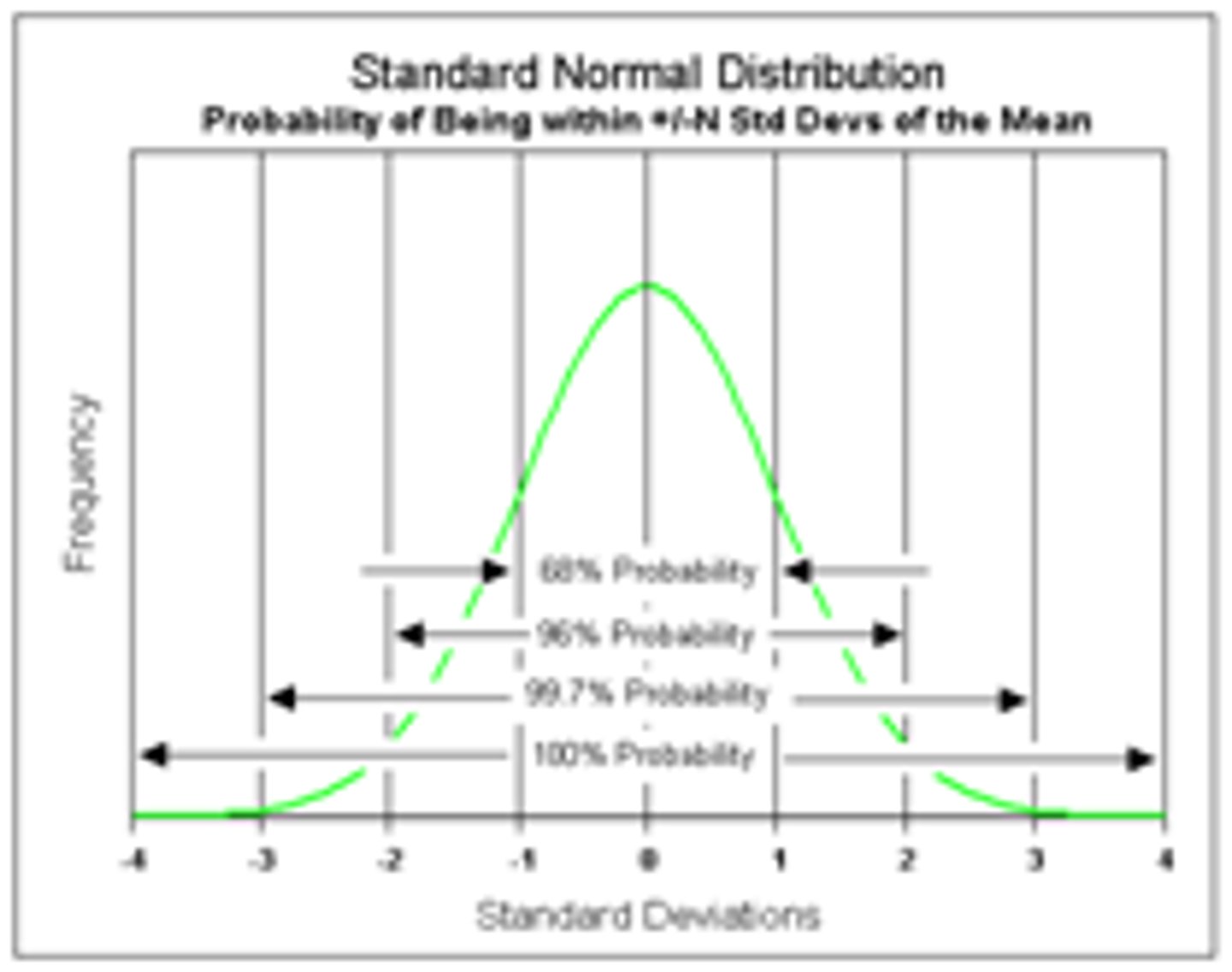
Normal Curve
A symmetrical, bell-shape that describes the distribution of many types of data; most scores fall near the mean (68 percent fall within one standard deviation of it) and fewer and fewer near the extremes.
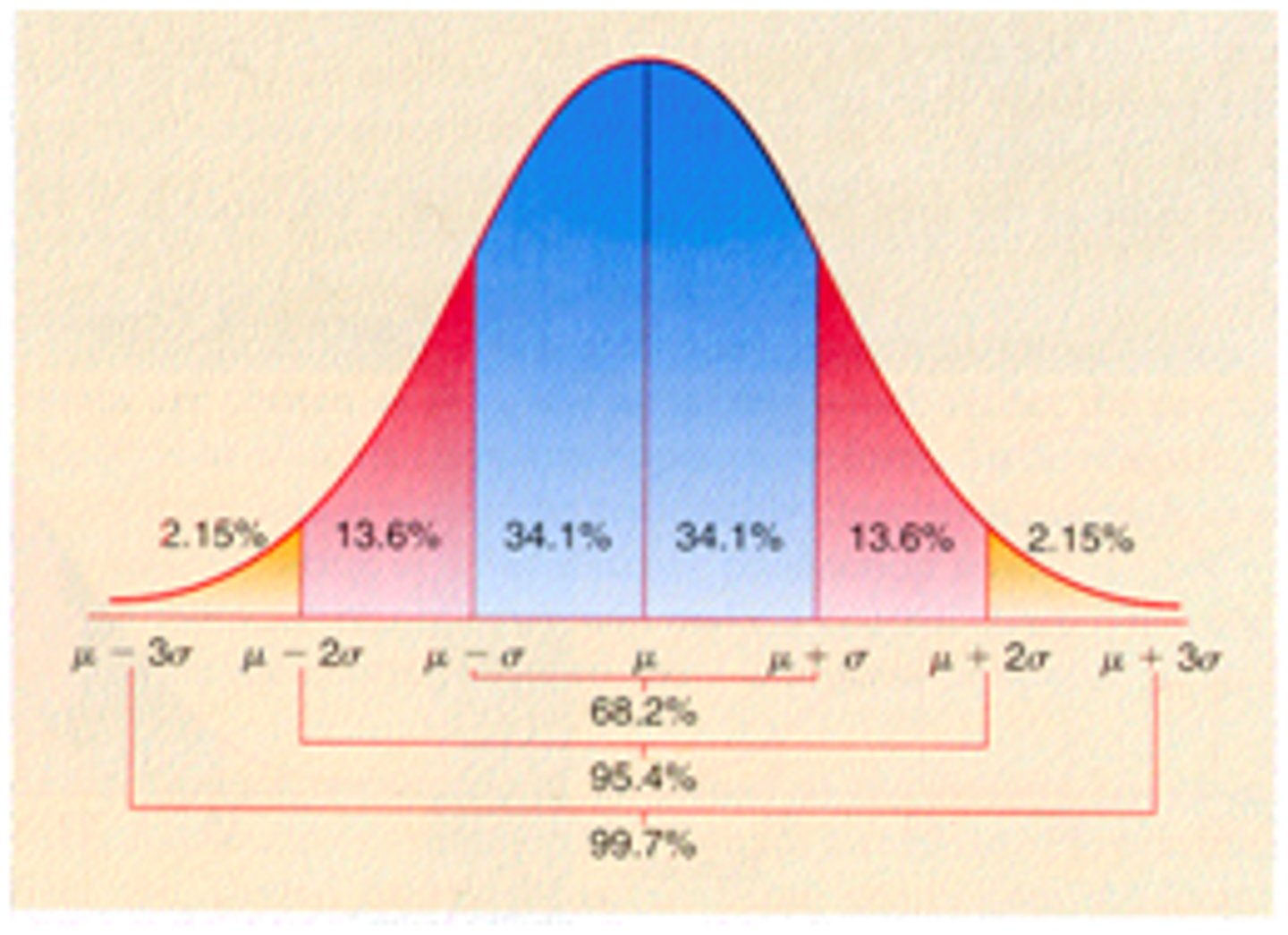
Statistical Significance
A statistical statement of how likely it is that an obtained result occurred by chance.
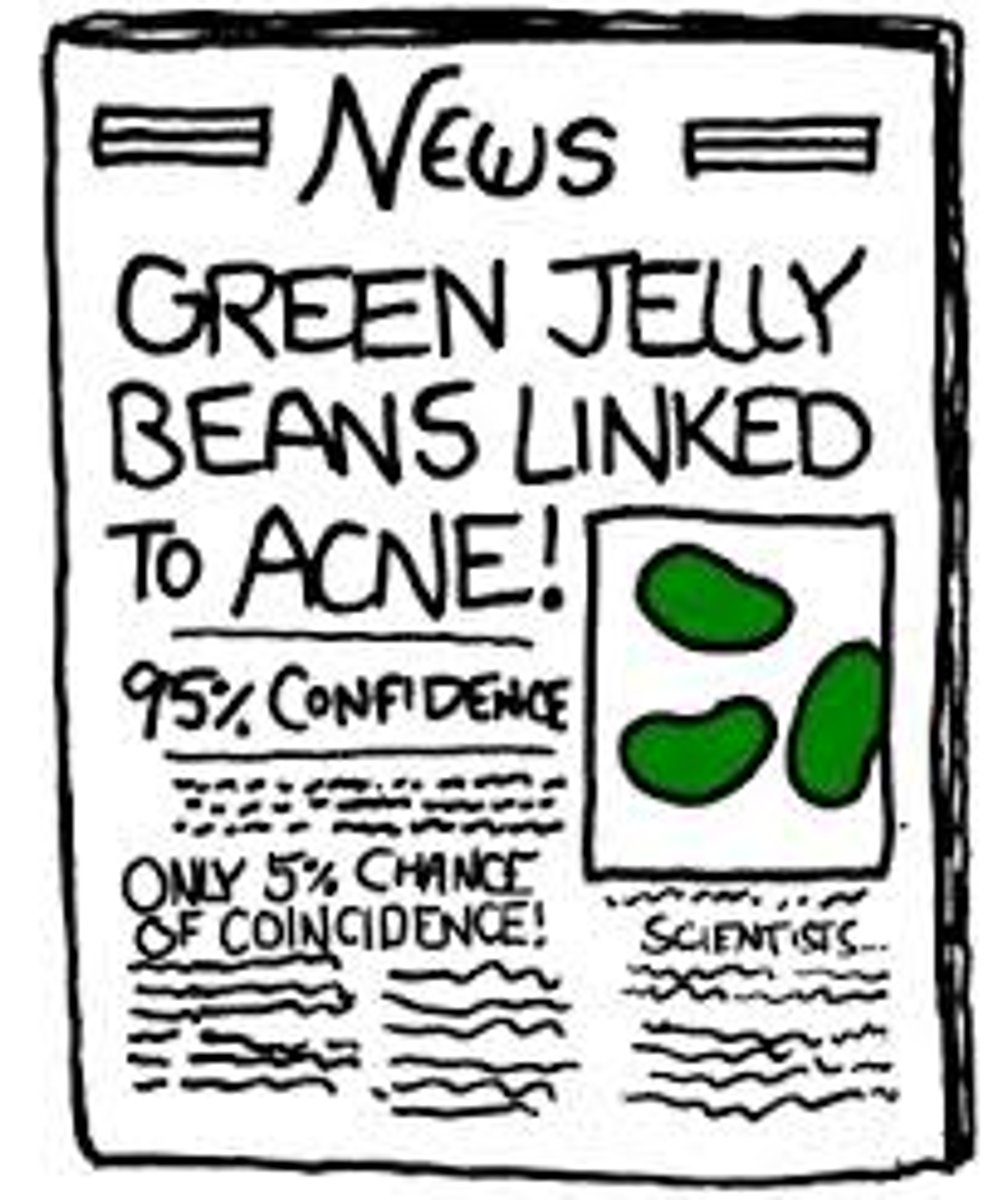
Culture
The enduring behaviors, ideas, attitudes, values and traditions shared by a group of people and transmitted from one generation to the next.

Informed Consent
An ethical principle that research participants be told enough to enable them to choose whether they wish to participate.

Debriefing
The post-experimental explanation of a study, including its purpose and any deceptions, to its participants.

Biological Psychology
a branch of psychology concerned with the links between biology and behavior.

Neuron
a nerve cell; the basic building block of the nervous system.

Sensory Neurons
neurons that carry incoming information from the sensory receptors to the brain and spinal cord.

Motor Neurons
neurons that carry outgoing information from the brain and spinal cord to the muscles and glands.
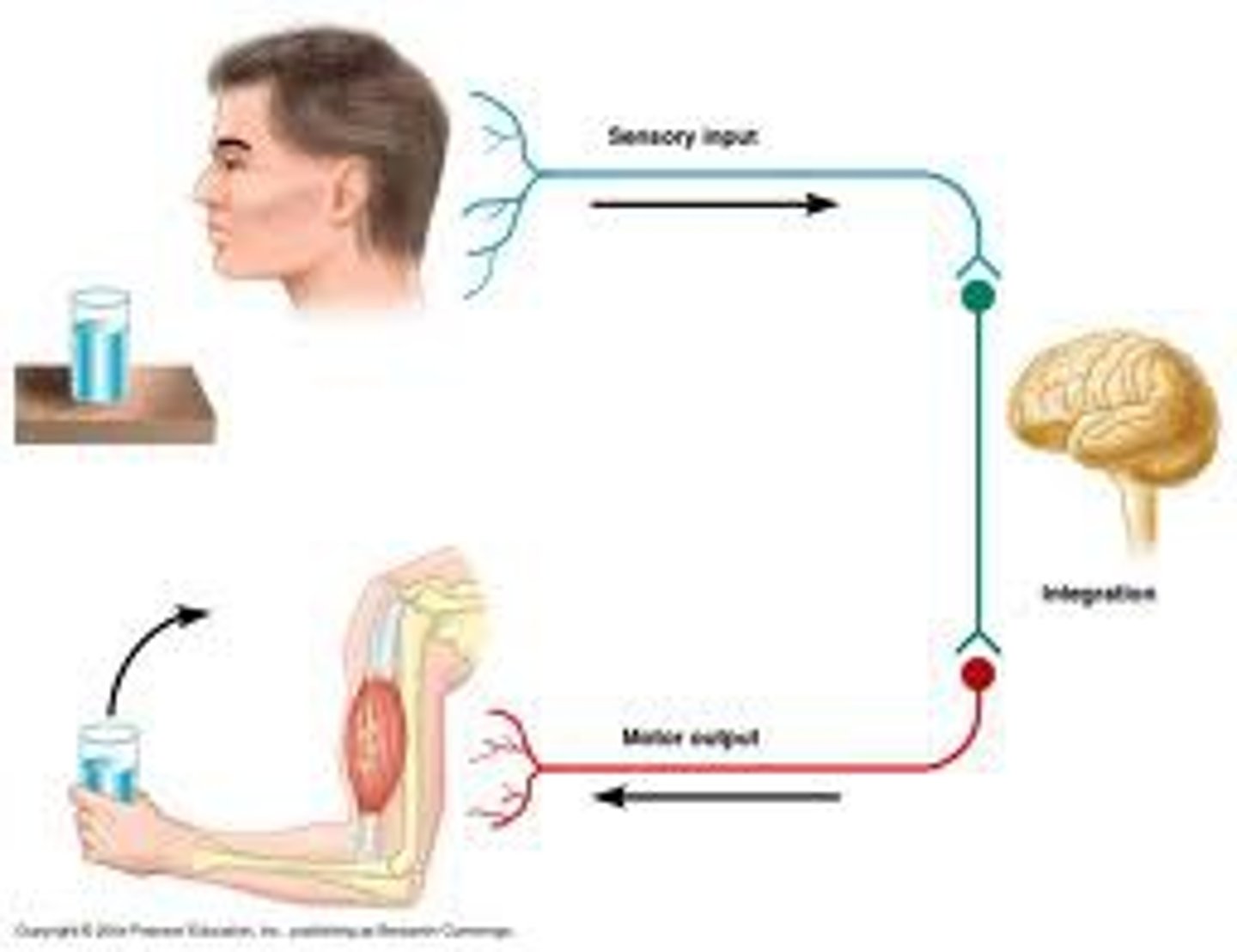
Interneurons
neurons within the brain and spinal cord that communicate internally and intervene between the sensory inputs and motor outputs.

Dendrites
the bushy, branching extensions of a neuron that receive messages and conduct impulses toward the cell body.
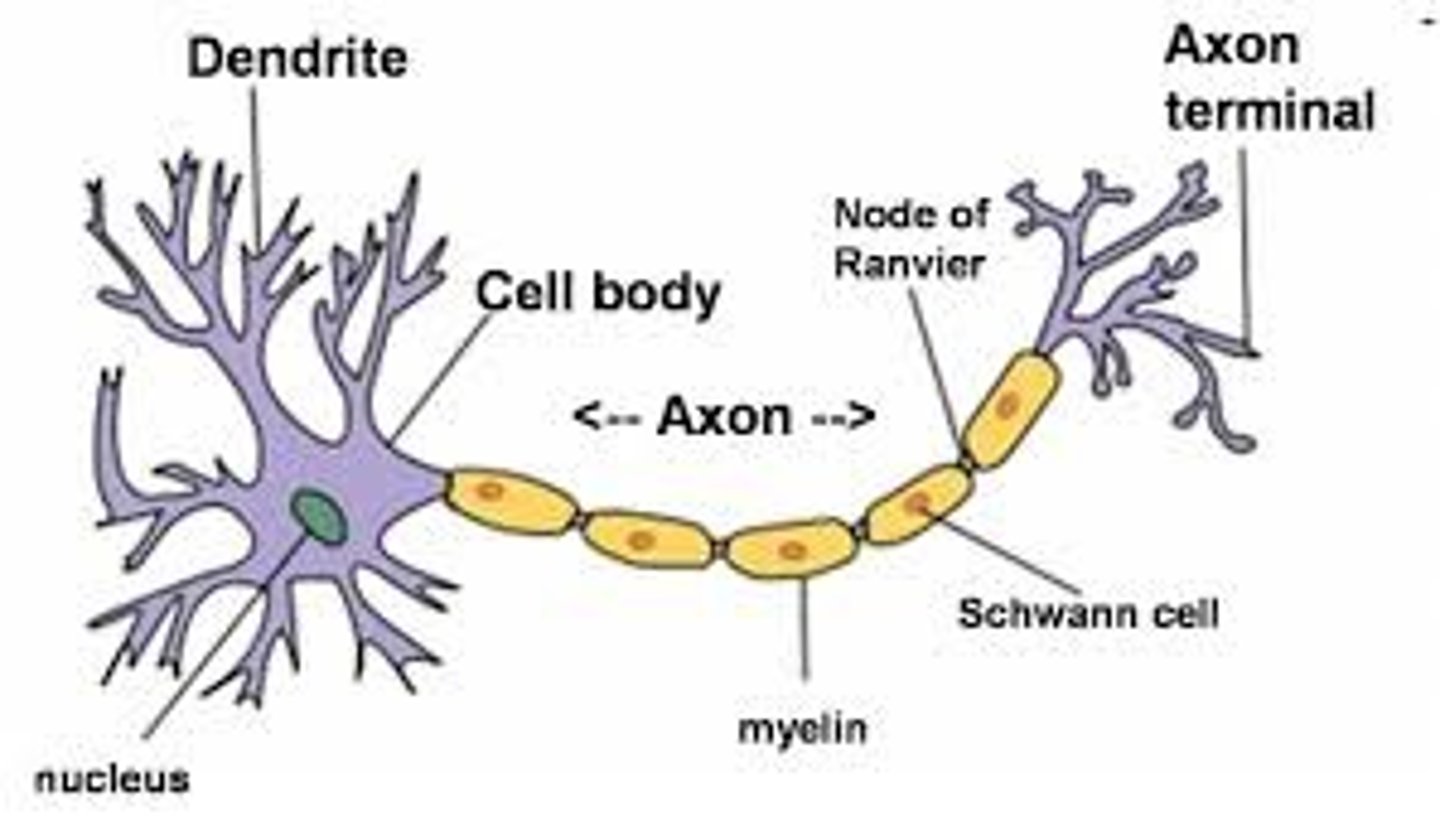
Axon
the extension of a neuron, ending in branching terminal fibers, through which messages pass to other neurons or to muscles or glands.
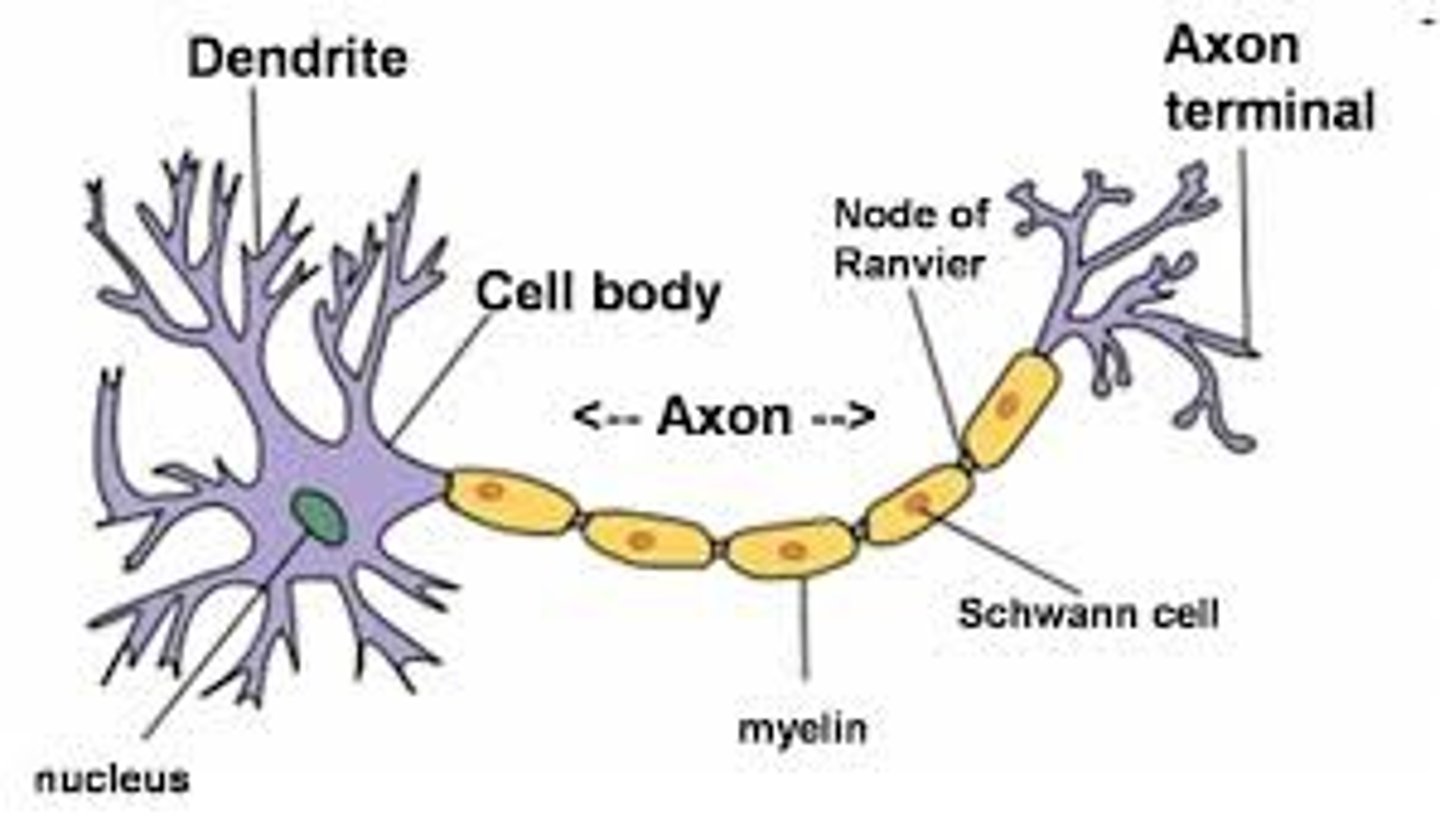
Myelin Sheath
a layer of fatty tissue segmentally encasing the fibers of many neurons; enables vastly greater transmission speed of neural impulses as the impulse hops from one node to the next.

Action Potential
a neural impulse; a brief electrical charge that travels down an axon.
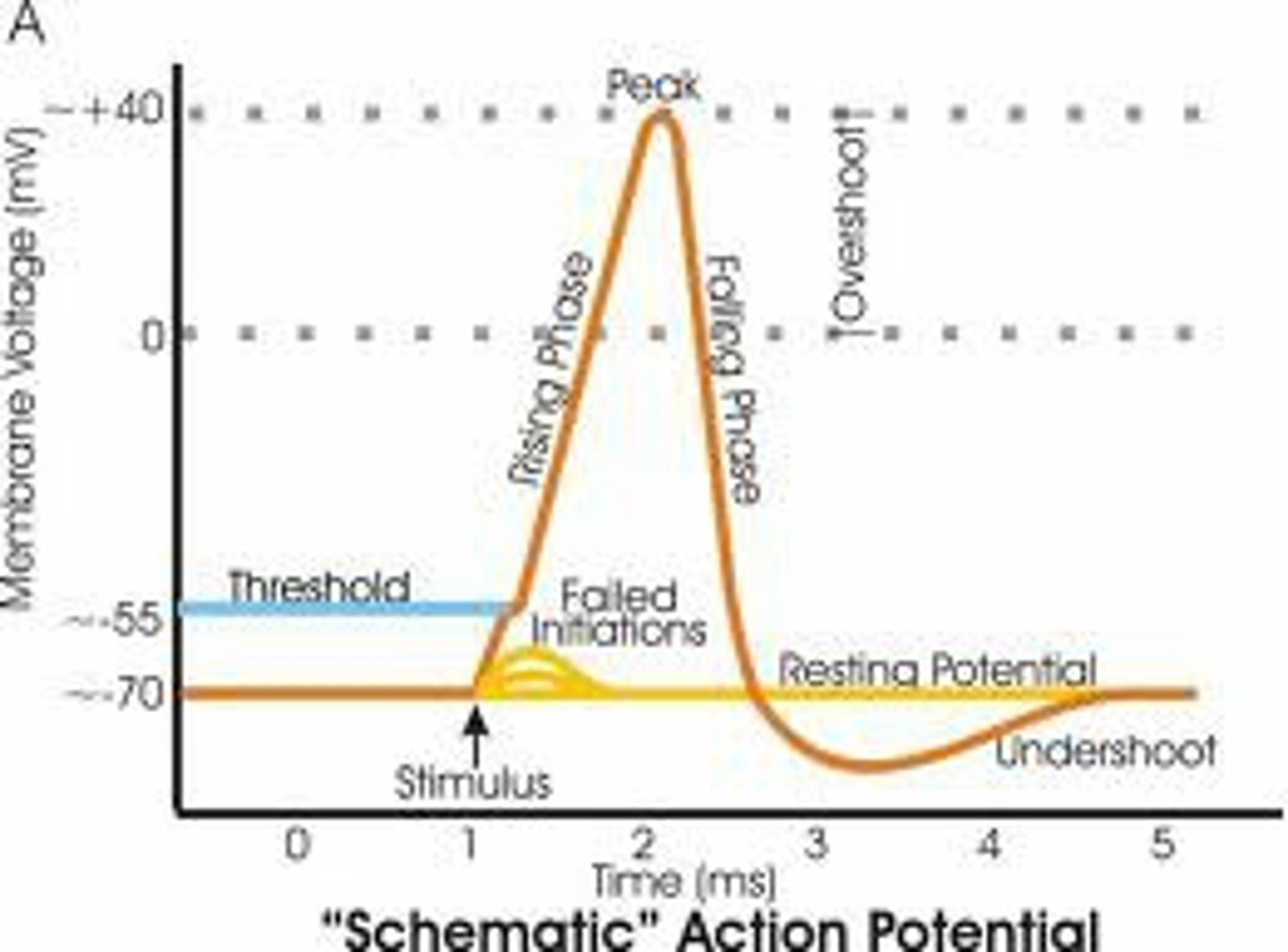
Threshold
the level of stimulation required to trigger a neural impulse.
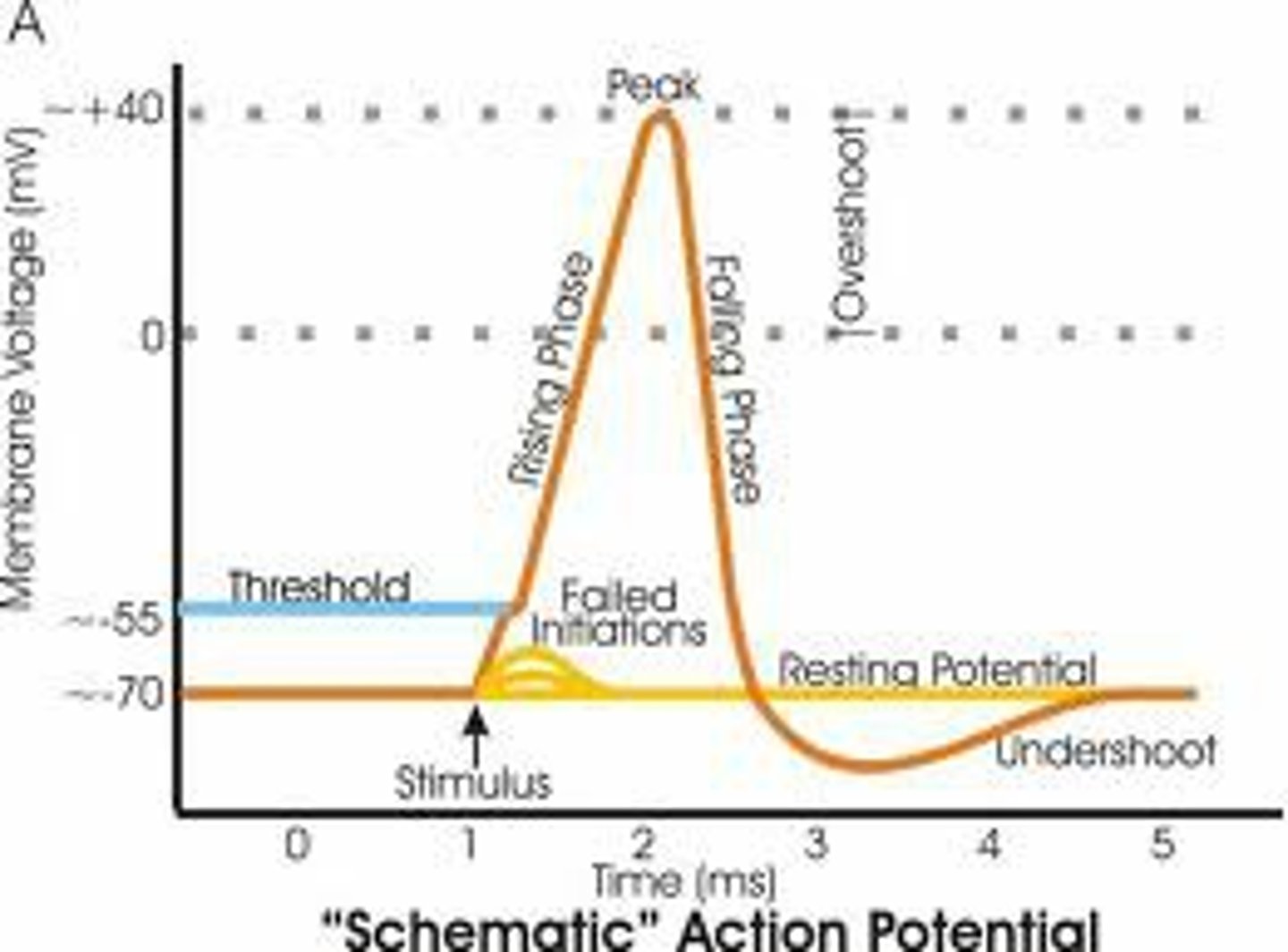
Synapse
the junction between the axon tip of the sending neuron and the dendrite or cell body of the receiving neuron. The tiny gap at this junction is called the synaptic gap or synaptic cleft.
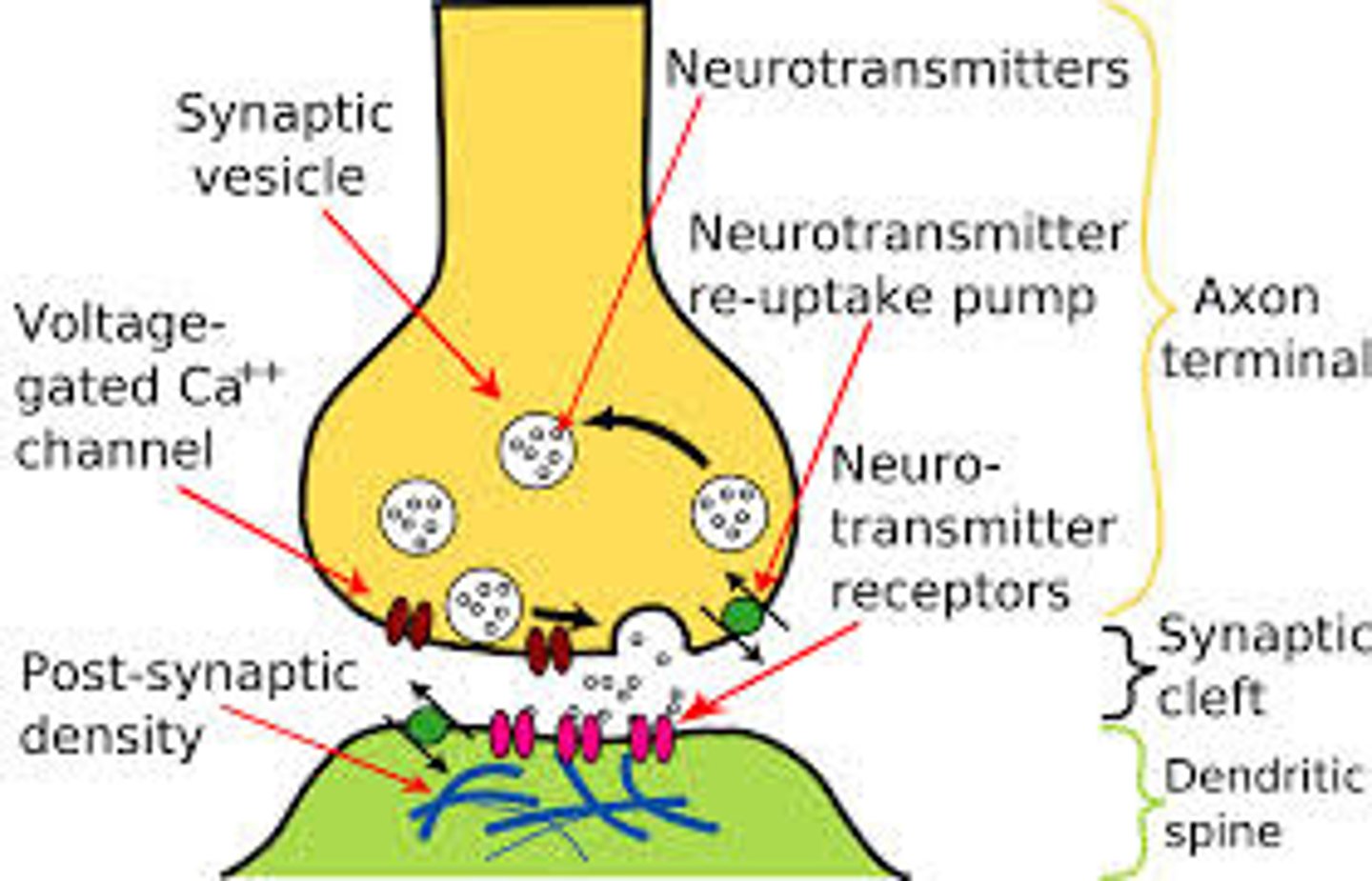
Neurotransmitters
chemical messengers that cross the synaptic gaps between neurons. When released by the sending neuron, they travel across the synapse and bind to receptor sites on the receiving neuron, thereby influencing whether that neuron will generate a neural impulse.
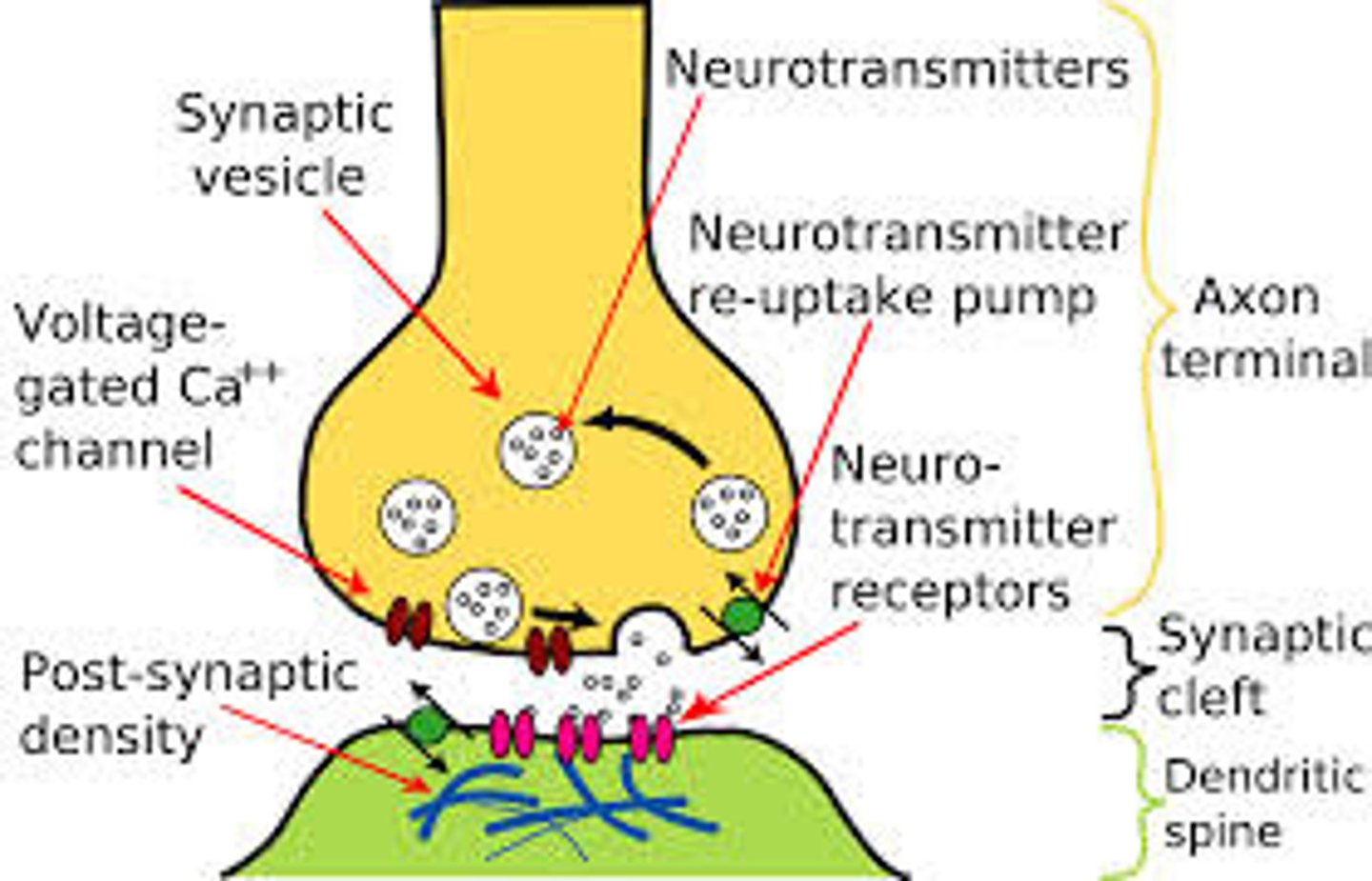
Reuptake
a neurotransmitter's reabsorption by the sending neuron.

Endorphins
"morphine within"—natural, opiate-like neurotransmitters linked to pain control and to pleasure.

Nervous System
the body's speedy, electrochemical communication network, consisting of all the nerve cells of the peripheral and central nervous systems.

Central Nervous System (CNS)
the brain and spinal cord.
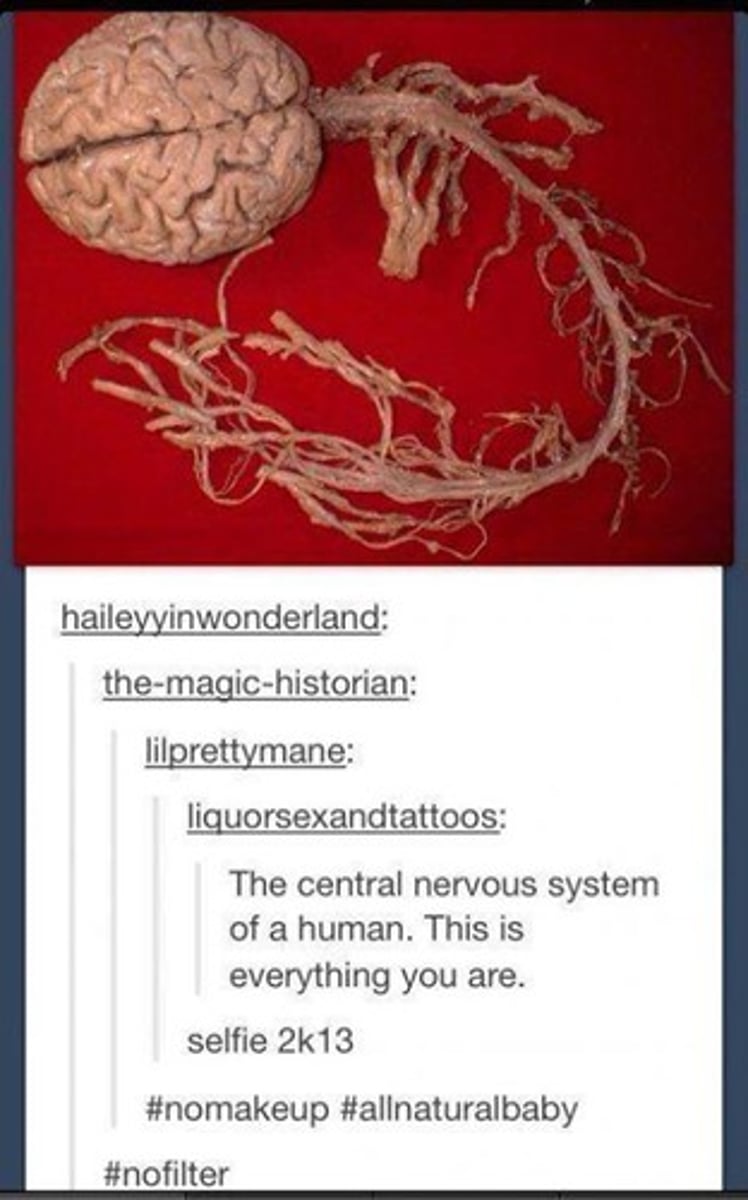
Peripheral Nervous System (PNS)
the sensory and motor neurons that connect the central nervous system (CNS) to the rest of the body.
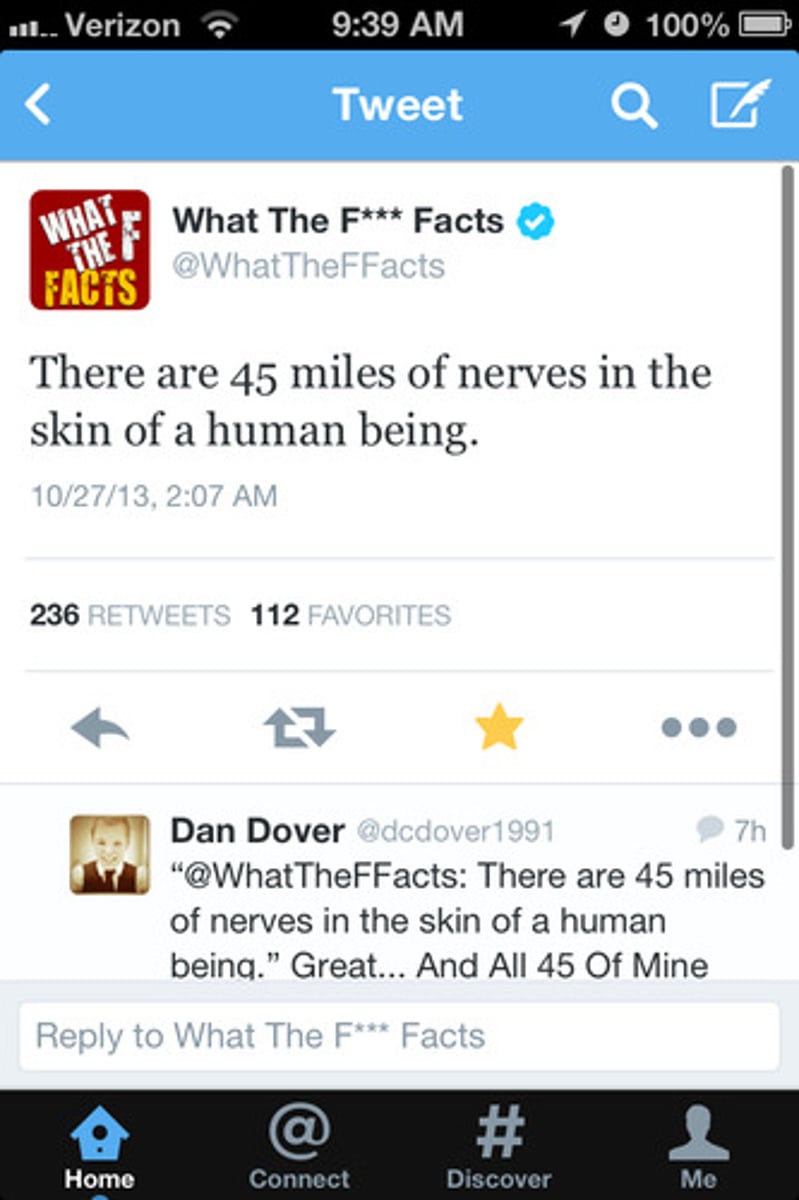
Nerves
bundled axons that form neural "cables" connecting the central nervous system with muscles, glands, and sense organs.
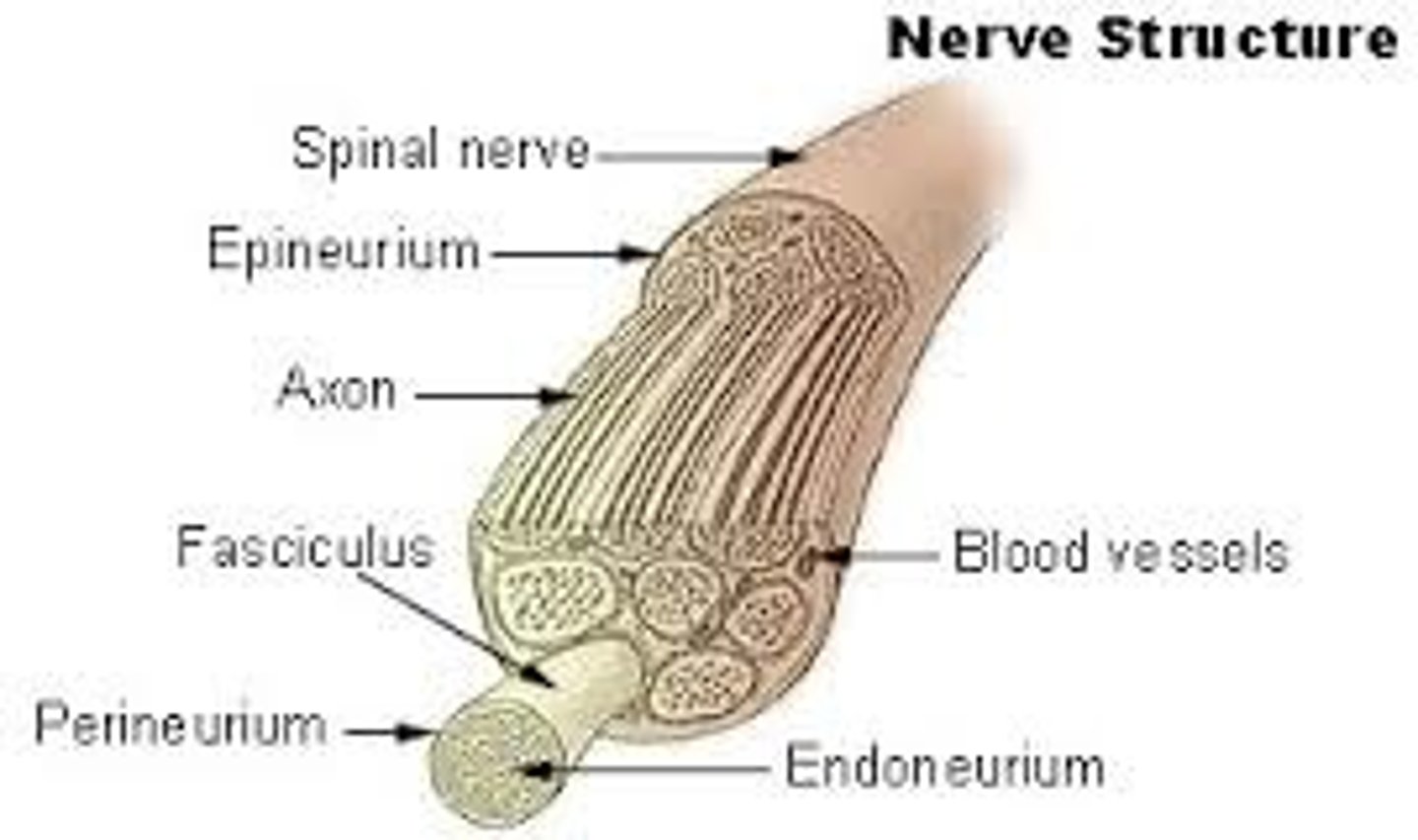
Somatic Nervous System
the division of the peripheral nervous system that controls the body's skeletal muscles. Also called the skeletal nervous system.
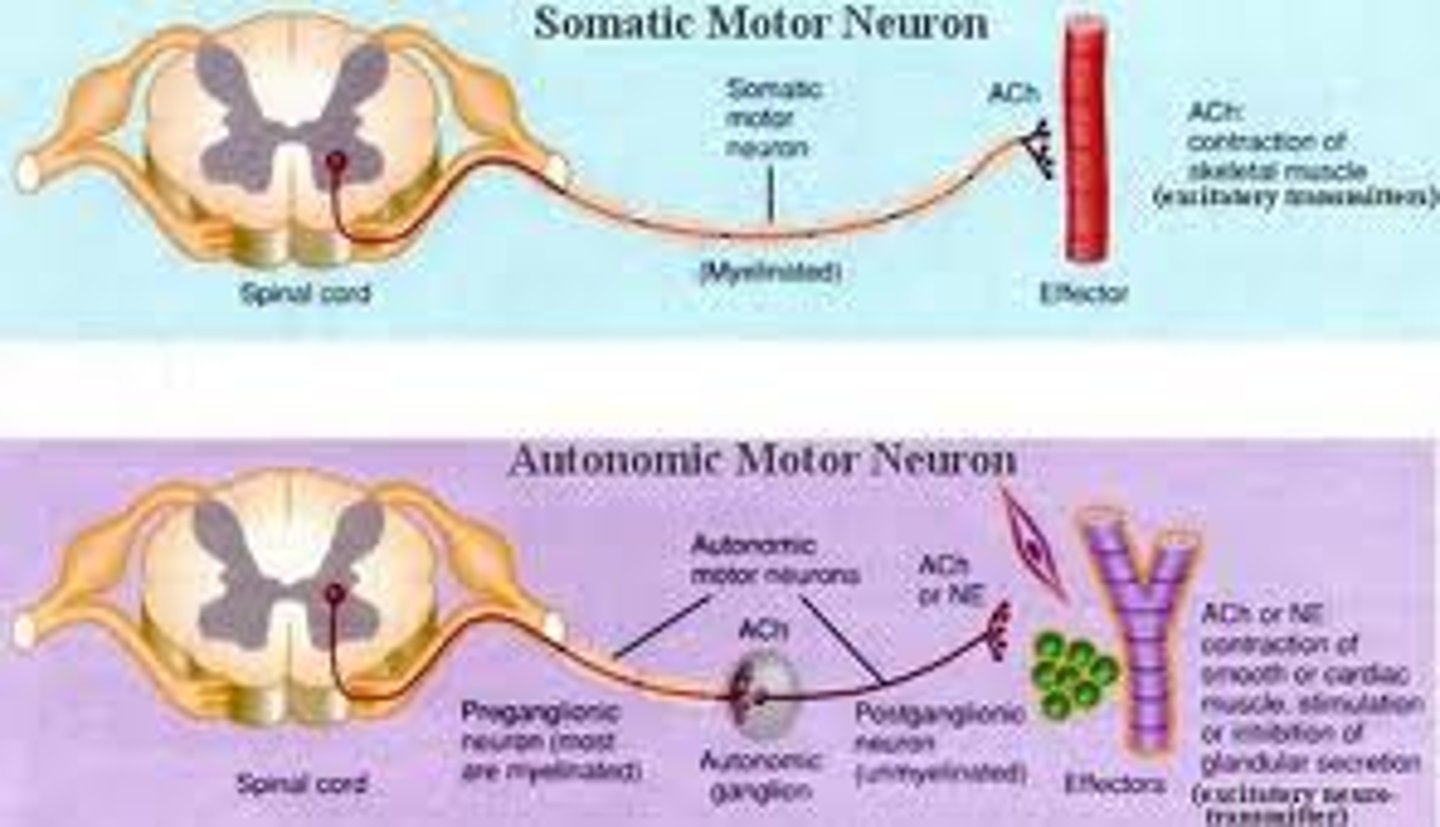
Autonomic Nervous System
the part of the peripheral nervous system that controls the glands and the muscles of the internal organs (such as the heart). Its sympathetic division arouses; its parasympathetic division calms.

Sympathetic Nervous System
the division of the autonomic nervous system that arouses the body, mobilizing its energy in stressful situations
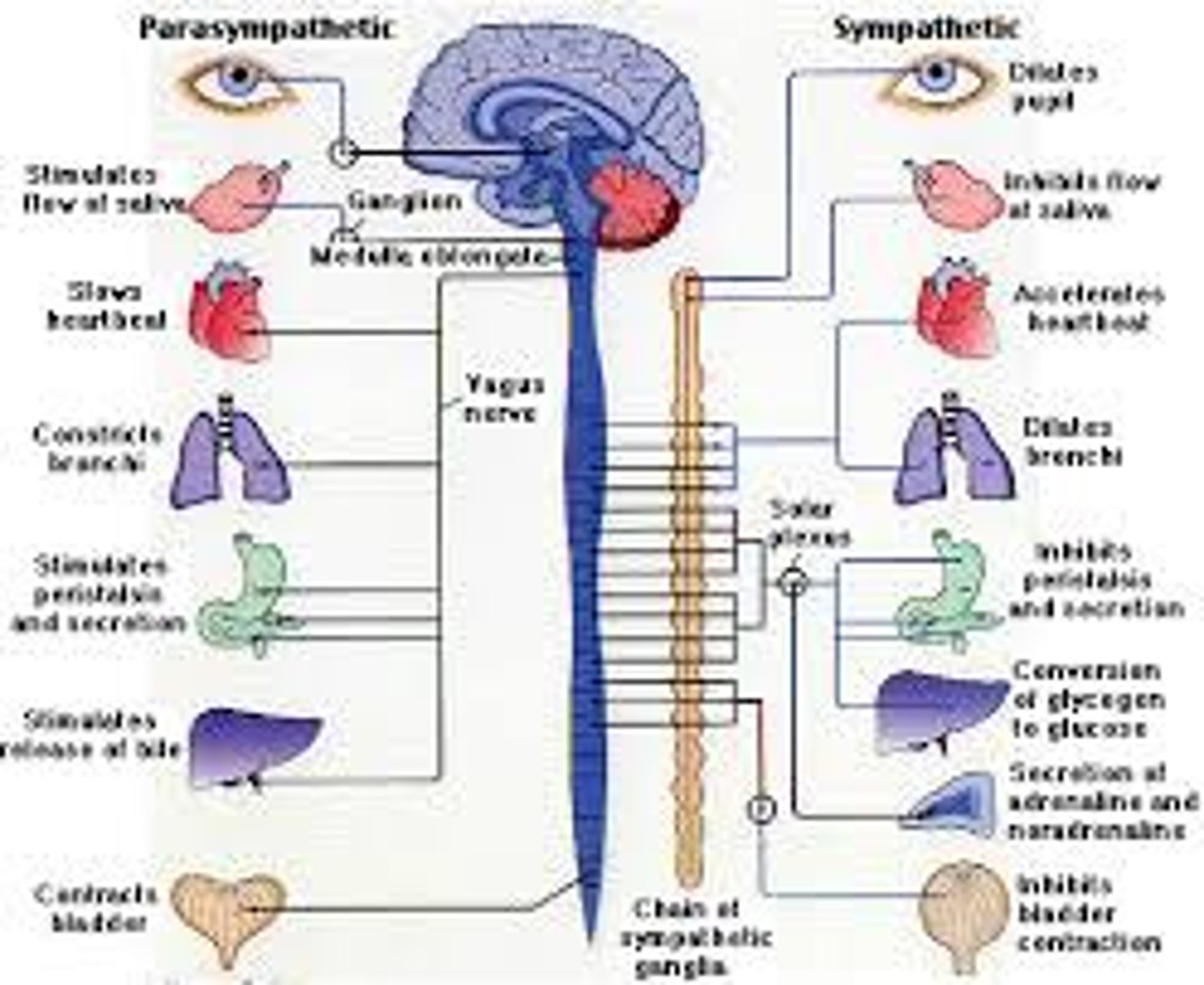
Parasympathetic Nervous System
the division of the autonomic nervous system that calms the body, conserving its energy.
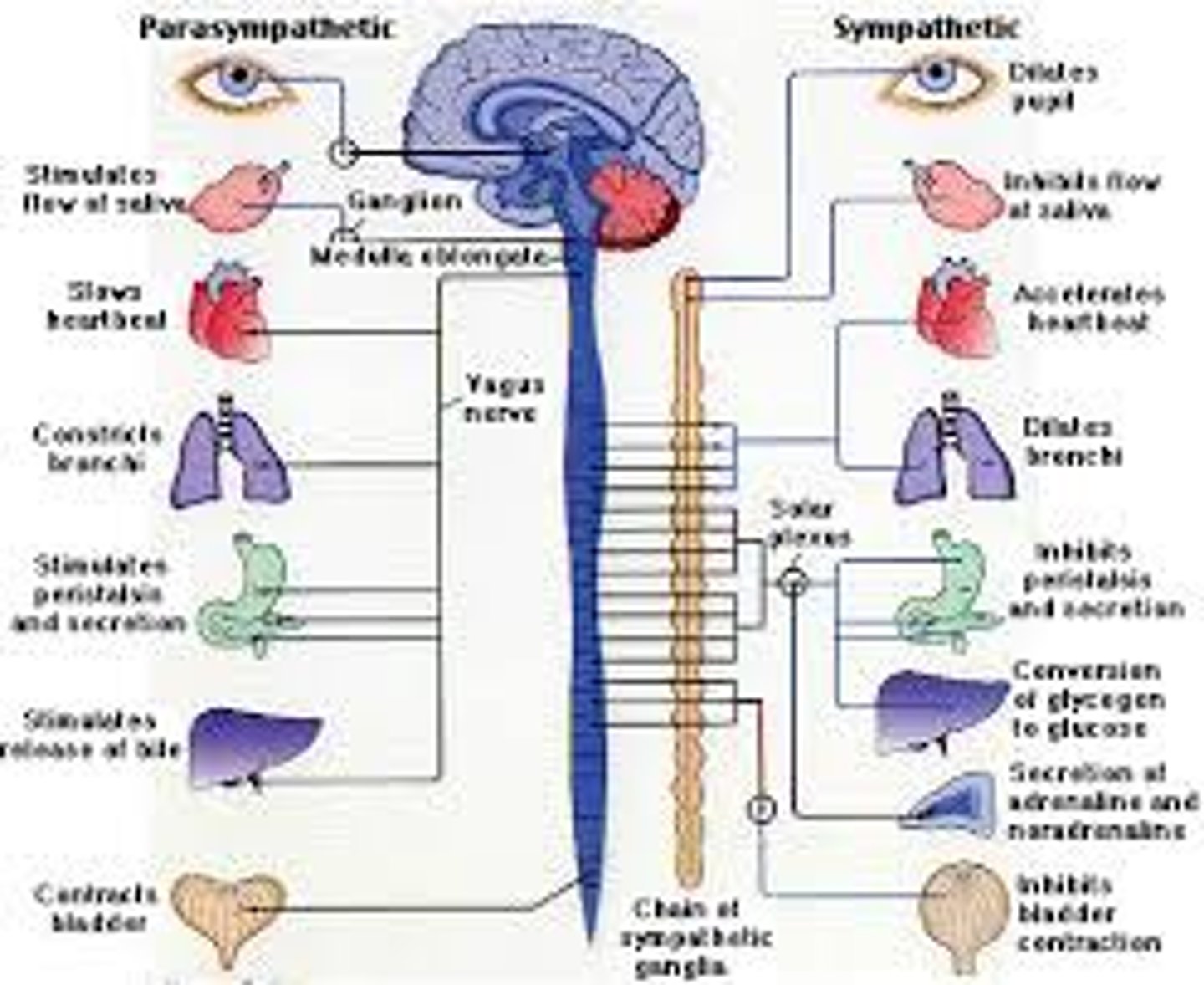
Reflex
a simple, automatic response to a sensory stimulus, such as the knee-jerk response.
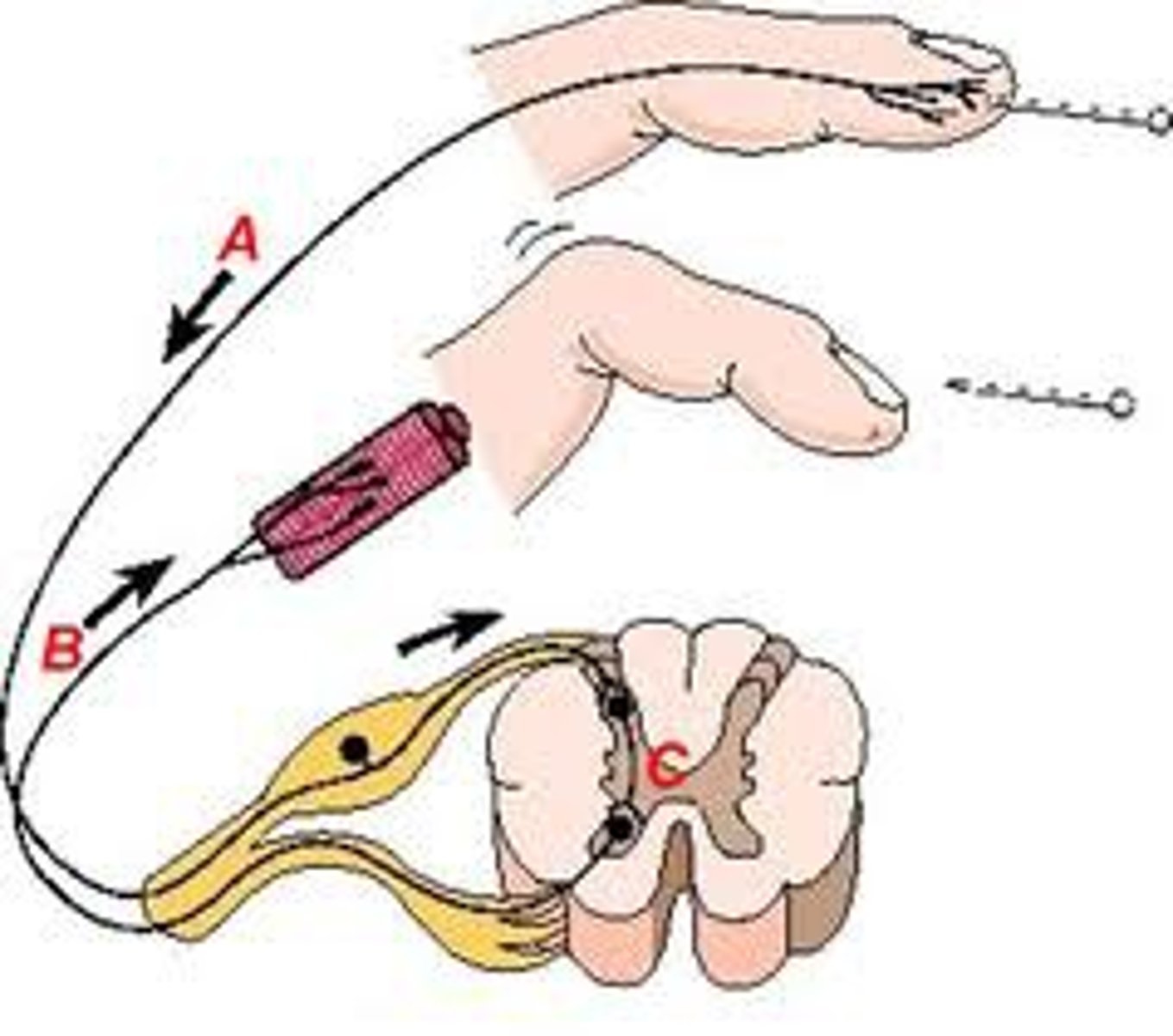
Endocrine System
the body's "slow" chemical communication system; a set of glands that secrete hormones into the bloodstream.

Hormones
chemical messengers that are manufactured by the endocrine glands, travel through the bloodstream, and affect other tissues.
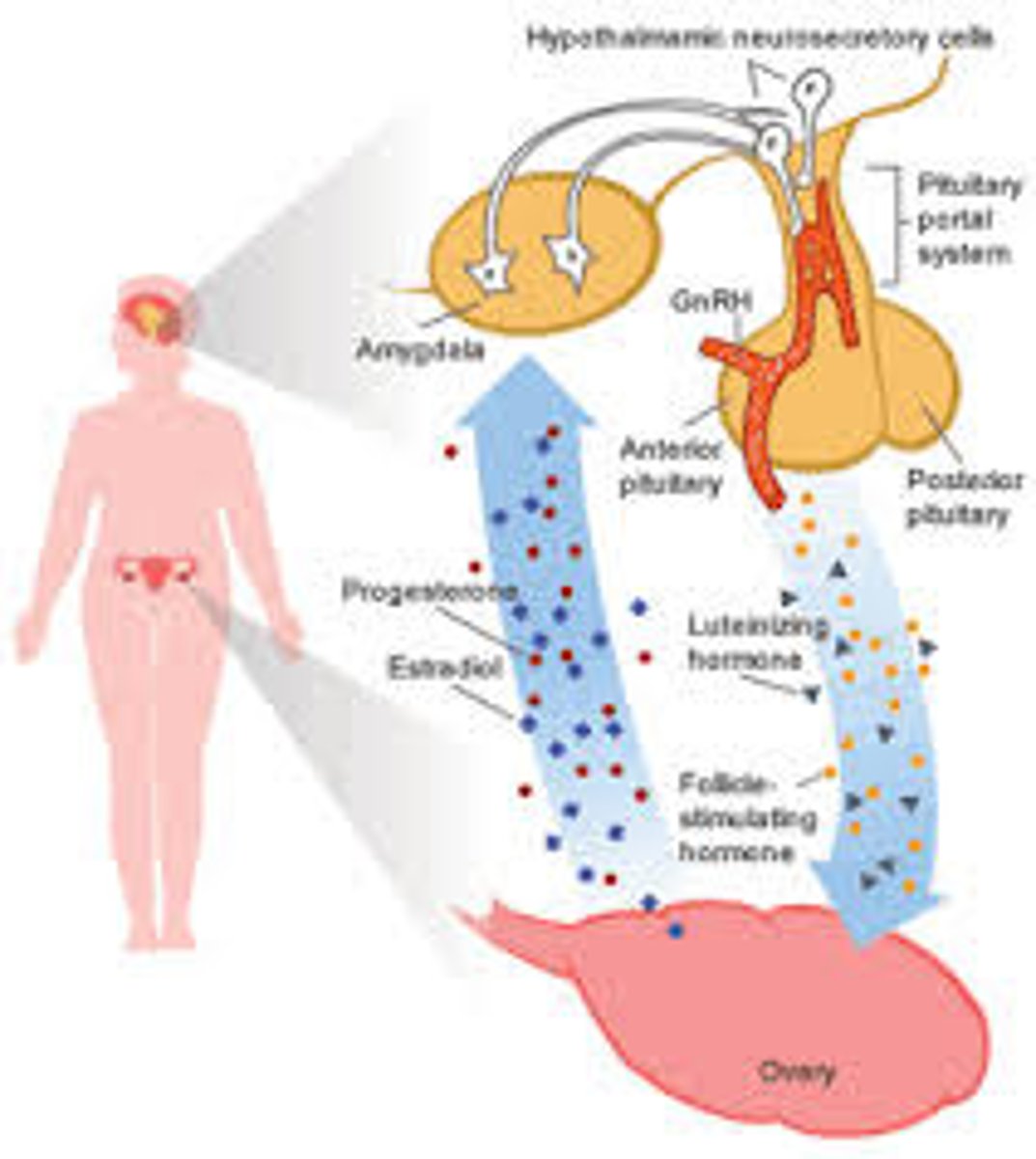
Adrenal Glands
a pair of endocrine glands that sit just above the kidneys and secrete hormones (epinephrine and norepinephrine) that help arouse the body in times of stress.
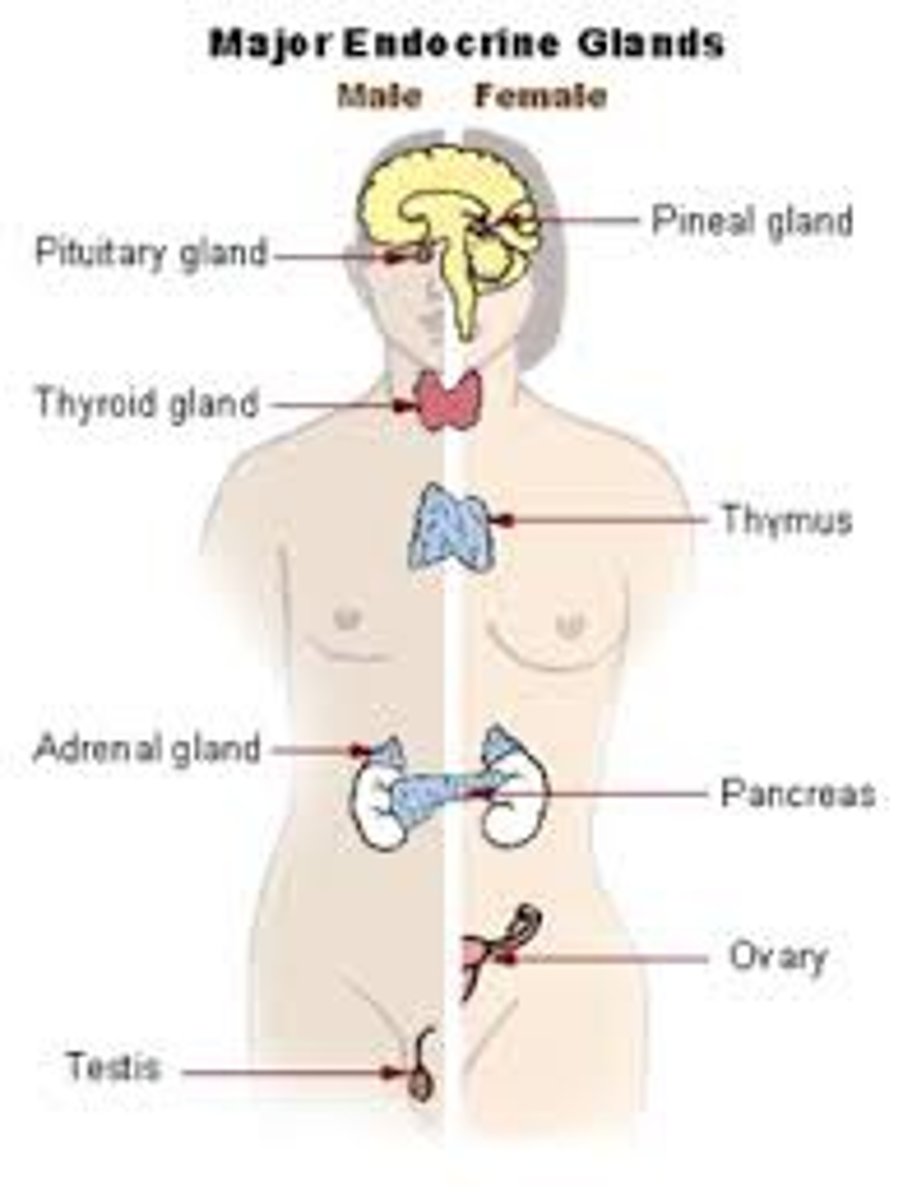
Pituitary Gland
the endocrine system's most influential gland. Under the influence of the hypothalamus, the pituitary regulates growth and controls other endocrine glands.
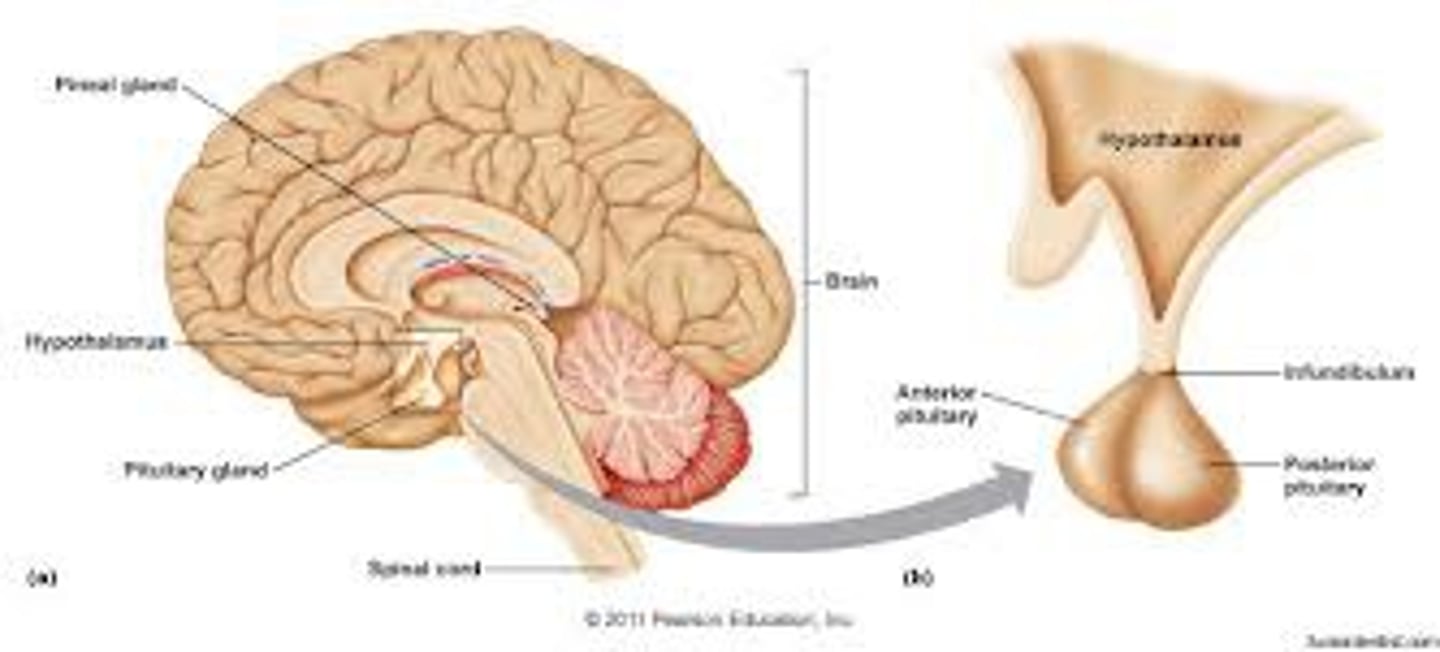
Lesion
tissue destruction. A naturally or experimentally caused destruction of brain tissue.

Electroencephalogram (EEG)
an amplified recording of the waves of electrical activity that sweep across the brain's surface. These waves are measured by electrodes placed on the scalp.
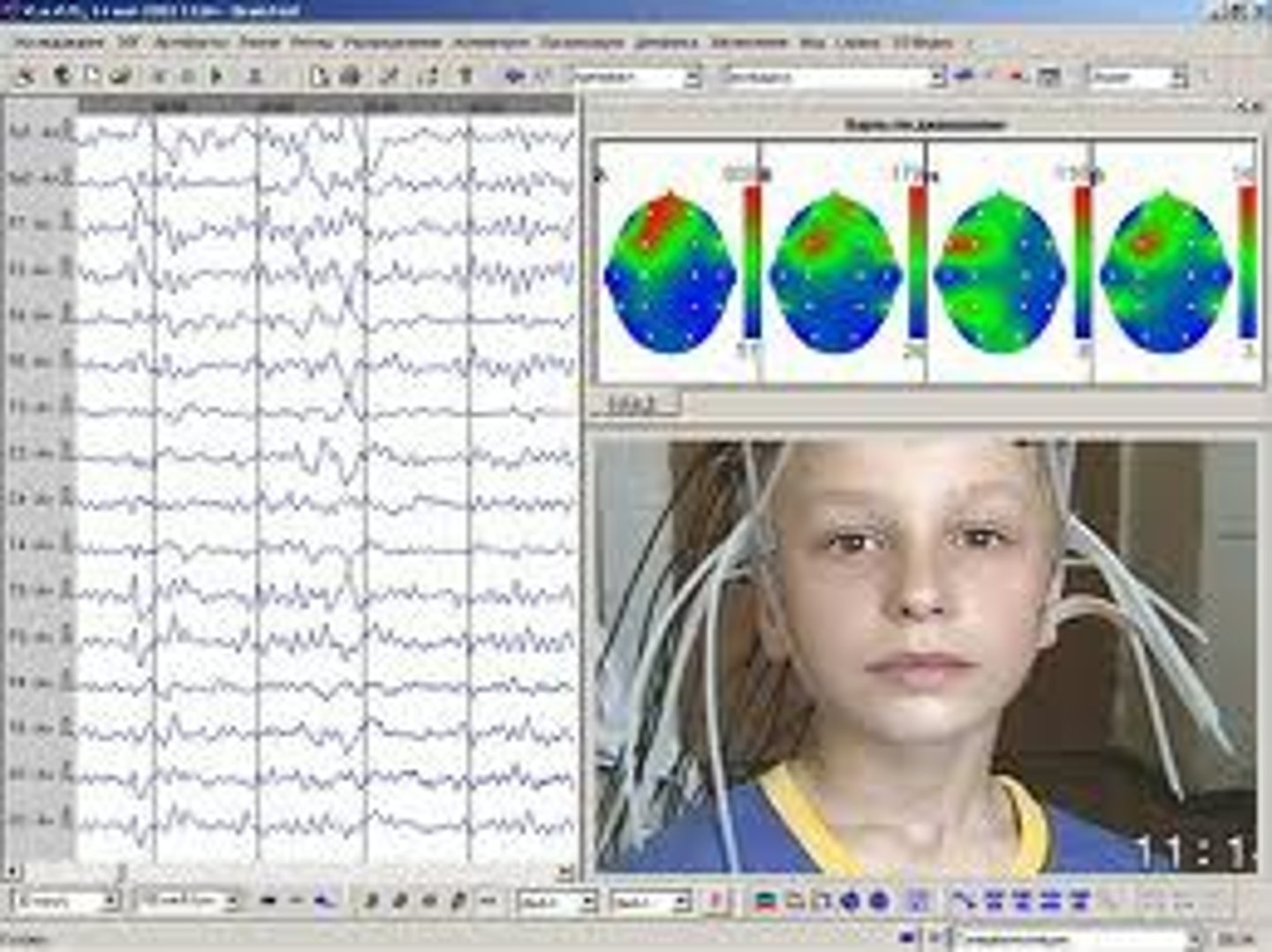
Computed Tomography (CT) scan
a series of X-ray photographs taken from different angles and combined by computer into a composite representation of a slice through the body. Also called CAT scan.
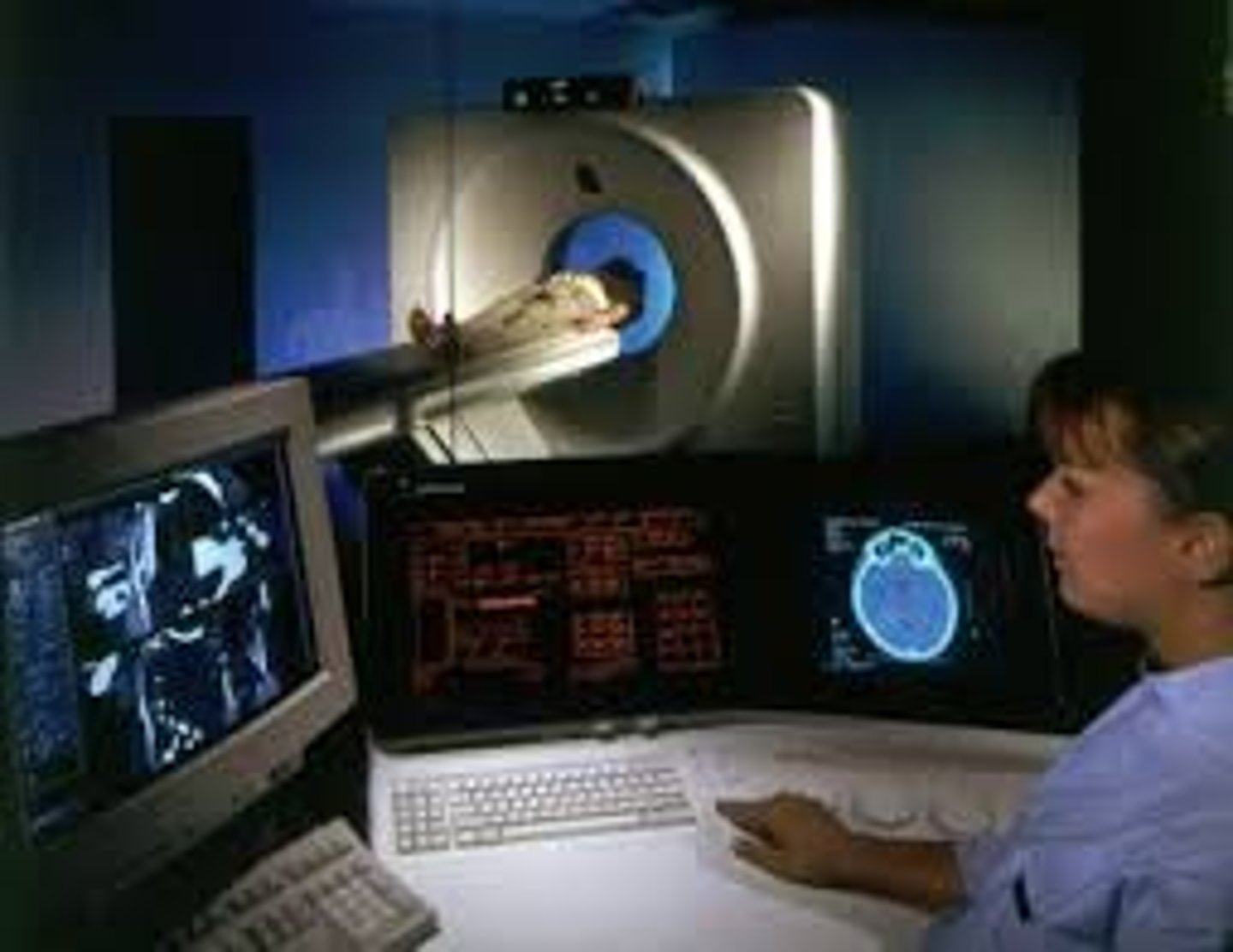
Positron Emission Tomography (PET) scan
a visual display of brain activity that detects where a radioactive form of glucose goes while the brain performs a given task.
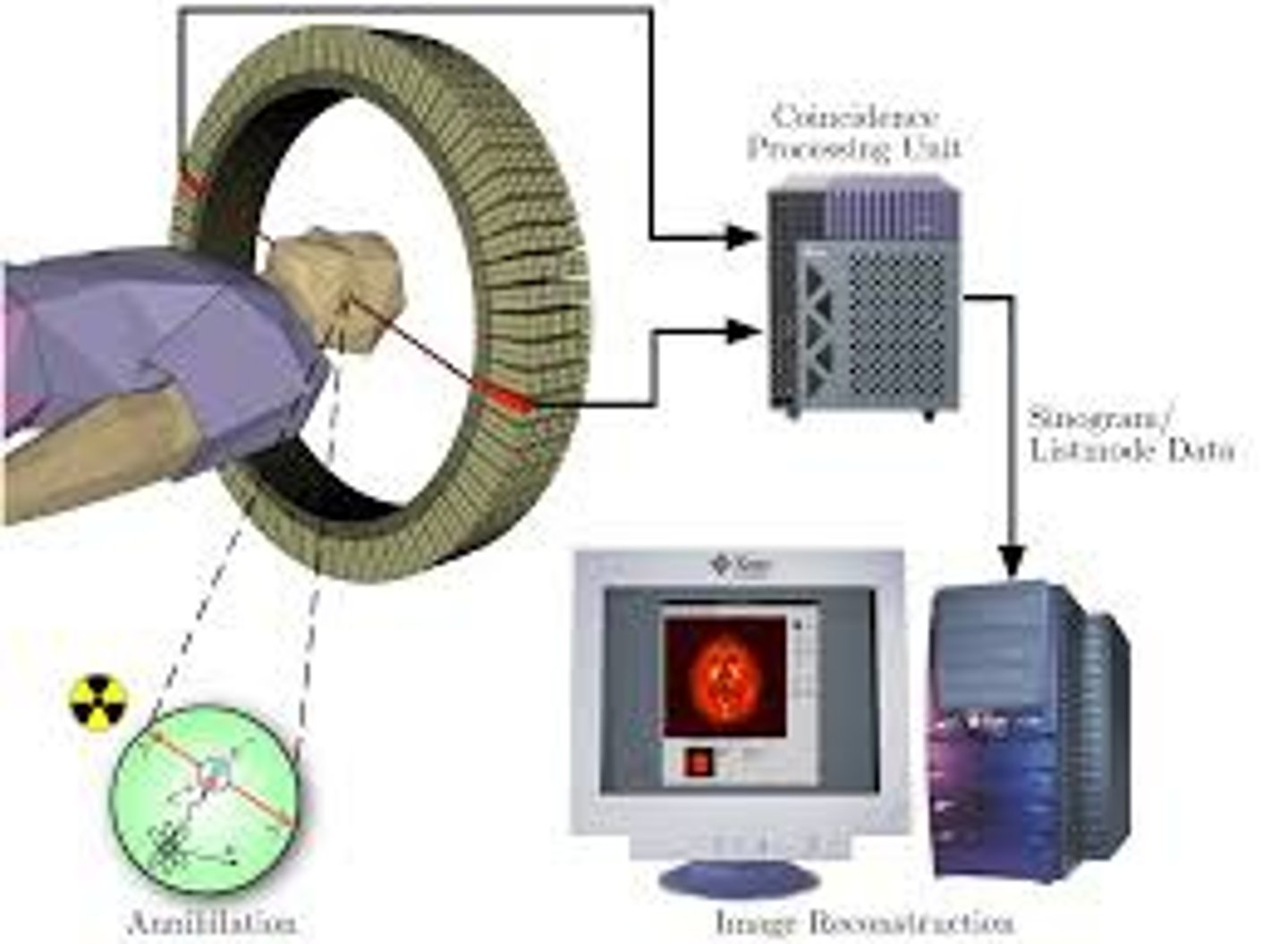
Magnetic Resonance Imaging (MRI)
a technique that uses magnetic fields and radio waves to produce computer-generated images of soft tissue. They scans show brain anatomy.
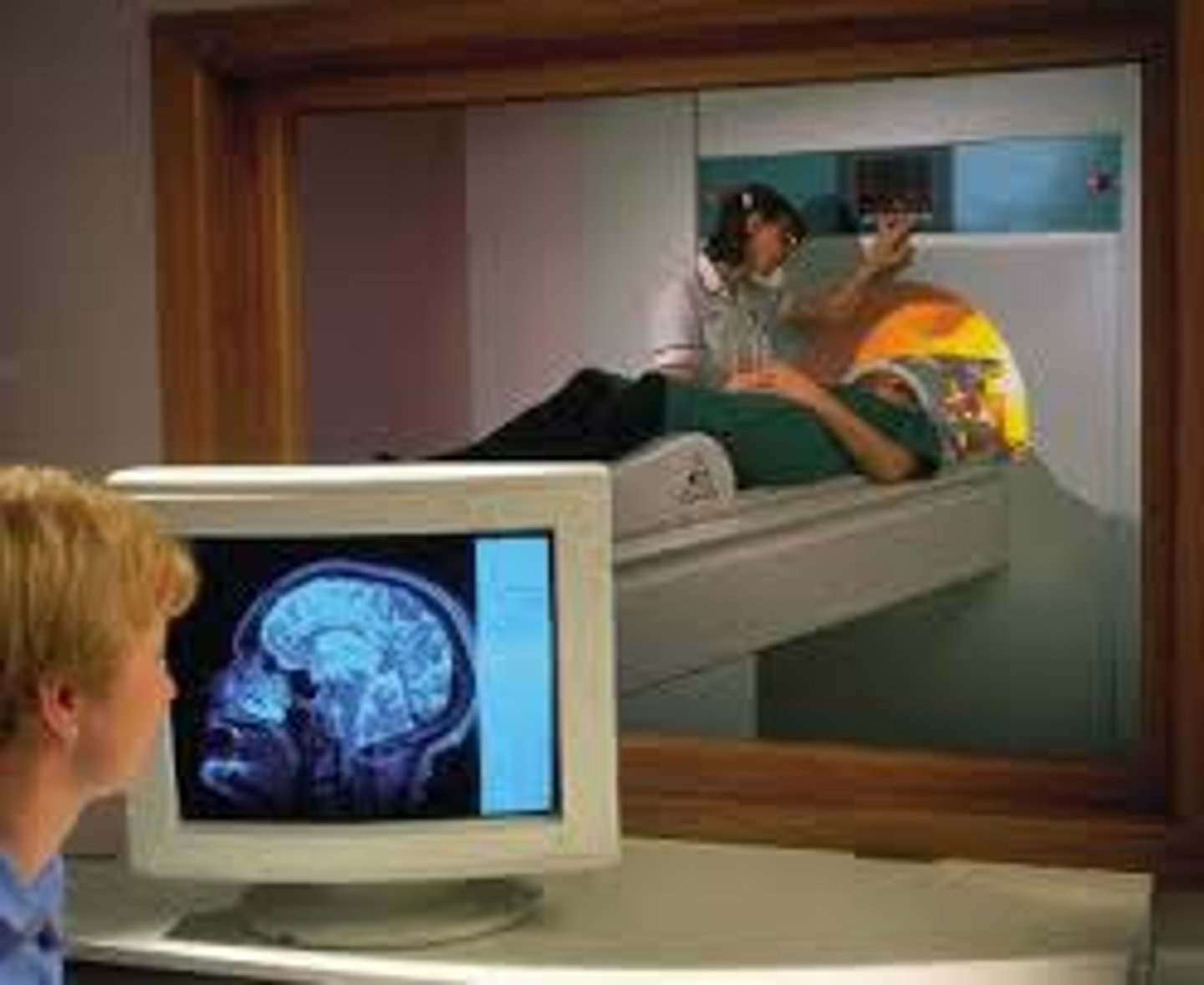
Functional Magnetic Resonance Imaging (fMRI)
a technique for revealing bloodflow and, therefore, brain activity by comparing successive MRI scans. These scans show brain function.

Brainstem
the oldest part and central core of the brain, beginning where the spinal cord swells as it enters the skull; It is responsible for automatic survival functions.
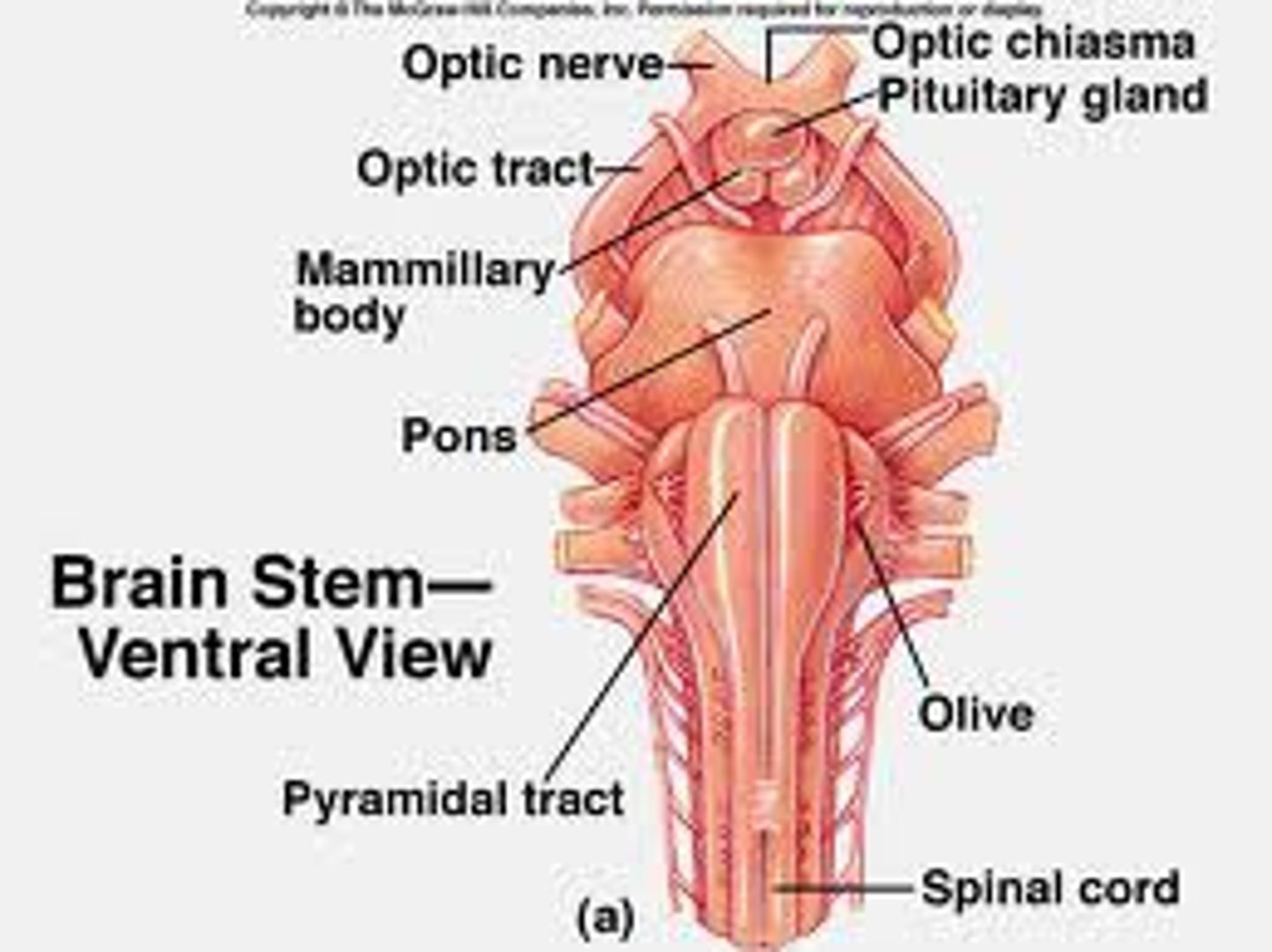
Medulla
the base of the brainstem; controls heartbeat and breathing.
